
- MILL HILL
- WILDLIFE REPORTS 2010

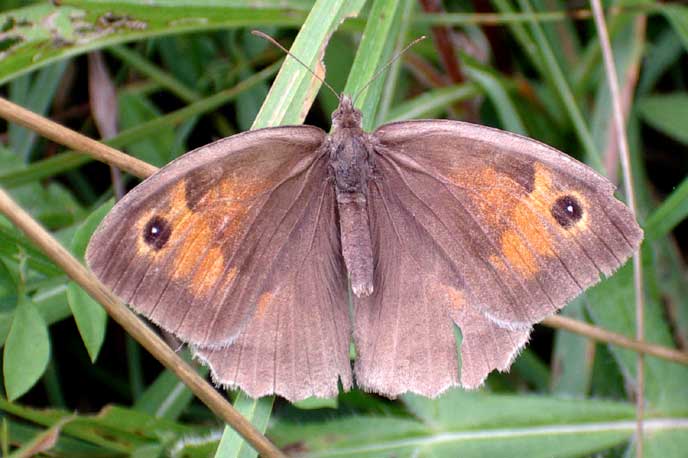 |
 |
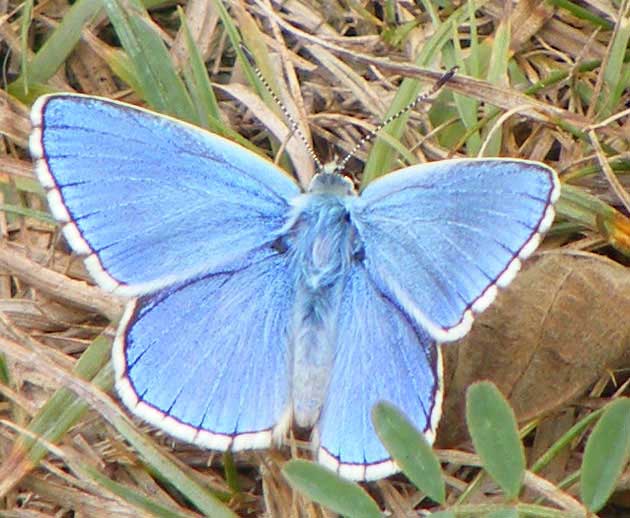 |
 |
|
|
|
|
|
Noticeable
summer plants of the upper meadows include Greater
Knapweed, Hardheads (=Lesser Knapweed),
Field
Scabious, Meadow Cranesbill, Alexanders,
Pyramidal
Orchids,
Plantains,
Melilots,
Meadow Vetchling, Yarrow,
Eyebrights,
Musk
Thistles,
Hounds-tongue*,
Perforate
St. John's Wort*, Great Mullein* and
many others. Herb Robert is
found amongst the scrub.
(*notably
on disturbed ground.)
Some
Indicator Plants of Ancient Downland (Link)
Wild
Flora and Fauna on Chalk flickr
Adur
Wild Flowers 2009
| OVERVIEW:
A large part (724 acres) of the downs including Mill Hill were presented to the people of Shoreham in 1937. Just over 30 acres still remain as public open land and a Local Nature Reserve. This is divided into about 11 acres of grassland and meadows above the ridge, about 9 acres of scrub, the copse and glades at the northern end, and about half of the prime Chalkhill Blue area of 6.4 acres of herbland remaining. 6 acres has been lost to a Sycamore woodland on the southern slopes. This is low fertility chalkland not suitable for grazing. The top area is effectively a wild meadow and the lower slopes a rabbit warren dominated by prostrate (not the upright form) Horseshoe Vetch, Hippocrepis comosa. |
Horseshoe Vetch |
|||||
| Chalkhill Blues:
Mill
Hill is nationally important because of its population of Chalkhill
Blue Butterflies. Estimates of the numbers
are notoriously inaccurate. In the 1950s the population was estimated by
R. M. Craske to
be 50,000. This may be an exceptionally good year. I would estimate the
numbers at that time to be nearer 25,000 for Mill Hill only. After the
cattle grazing and thorn incursions the numbers plummeted to the most reliable
estimate in 1960 of 6,000. The new road and Sycamore woodland further denuded
the
Horseshoe Vetch,
Hippocrepis
comosa, and bare chalk downland to
a figure I have estimated at a top figure of 3,000 Chalkhill Blue Butterflies
at the turn of the millennium (counted in 2003). Almost all these butterflies
are now to be found on the six acres of the lower slopes.
Text
by Andy Horton
Calcareous
Grassland Message |

 |
|||||
| "Our
family lived at The Mill House, Mill Hill, from around 1933 until about
1967, and every July we saw the "Butterfly Men" walking past onto
the Downs. My father used to tell us that they were interested in the blue
butterflies."
Heather
Clark (née Eager), Ryde, Isle of Wight
|
Nearest
Postcode: BN43 5FH
Grid Ref: TQ 210 074 (upper car park) Geographic Link OS Map Google Earth Map Magic Map of Mill Hill NR Local Nature Reserve Designation Natural England: Local Nature Reserves Multi-Map (Bird's Eye View) |
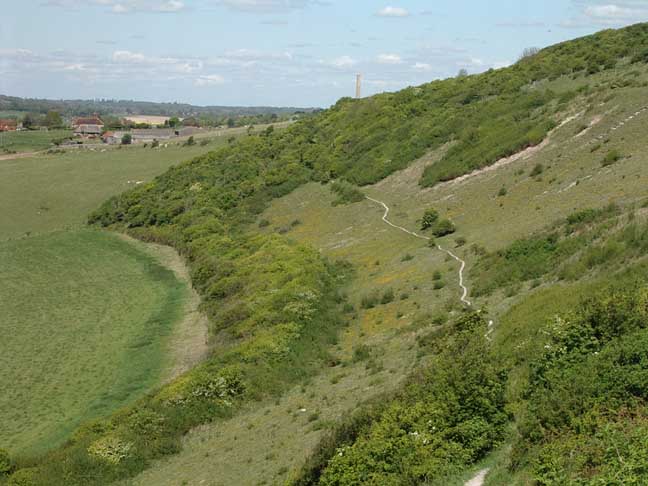
 |
The butterfly lower slopes at Mill Hill are under serious threat by a natural process known as ecological succession where the woody shrubs like Privet, Brambles and Hawthorn invade the herb-rich slopes gradually turning the downs into woodland and eliminating the butterfly larval food plants especially the Horseshoe Vetch, Hippocrepis comosa, on which the Chalkhill Blue Butterflies rely. The remedy is by expert professional removal of the Privet on a regular basis. This job is now being undertaken by volunteers. |

 |
| 2
December 2010
Snow fell over night in a Gentle Breeze (Force 3) that blew in from the NNE at 8 m.p.h. On the west-facing slopes of Mill Hill the snow depth was measured at 190 mm and in areas exposed to the north-easterlies the average depth could reach 230 mm. |
 |
 |
The only thing that moved were the birds with a small flock of Crows over the scrubby hedgerow at the bottom (west) of Mill Hill and and a Kestrel disturbed by them; and I also noted a Meadow Pipit and a Robin Redbreast.
 19
November 2010
19
November 2010
On
the cleared scrub area on the lower slopes of Mill Hill (north of the path)
an almost intact
Peacock Butterfly
basked on the dewy large leaves of a Great
Mullein plant. Musk
Thistles were still flowering
in the same area.
Cleistogamic flowers
of Sweet Violets
and Dog Violets
were scattered thinly over the lower slopes with a few petals of Hawkbits
remaining. Small amounts of Nostoc Commune
were present after the rain. Dogwood
was noted in flower in the Triangle area of
the middle slopes with long shoots coming up from the previously cleared
ground. On the upper part of Mill Hill there were isolated and scattered
flowers of Greater Knapweed
and Yarrow.
The
Beech
leaves
had turned to orange-brown, and the
copse
floor at the top of the hill was covered in Sycamore
leaves.
Adur
Butterfly List 2010
Adur
Violets
3 November
2010
A
trip on an overcast day to Mill Hill recorded a Red
Valerian still in flower on the pavement
next to bridge at the northern end and the following flowers
on the southern part of Mill Hill: Ragwort,
Sow Thistle, Welted
Thistle, Greater Knapweed and Yarrow.
On the scrub of the lower slopes there were a few tiny flowers on the Great
Mullein, plus a handful of Musk
Thistle, and scattered over the lower
slopes were Dog Violets,
and at least one Sweet Violet (or Hairy
Violet), a few Hardheads,
as well as the Autumnal Hawkbits
and some Rough Hawkbits and/or
Lesser
Hawkbits, and
Hawkweeds.
 |
 |
 |
|
|
|
on a Musk Thistle |
|
Three
medium-sized
Yellow-footed
Solitary
Bees,
Lasioglossum
xanthopum, visited the flowers of
the Musk Thistles.
A
clump of mushrooms
were growing on a stump.
Adur
Fungi Reports
Adur
Solitary Bees
24
October 2010
After
a spell of inclement weather I did not expect any butterflies
in the brief interlude of sunshine, but there was at least one Speckled
Wood on the Nettles over the Waterworks
Road, Old Shoreham. On the lower slopes of
Mill Hill, I saw a large butterfly amongst the Clematis
in the distance but it disappeared before I could recognise the species.
A small female Common Blue
fluttered out of the Privet.
Adur
Butterfly List 2010
 |
 |
|
|
|
|
On
the lower slopes, plants in flower noted
were a few Centaury,
frequent Autumnal Hawkbits,
one
Sweet Violet (this
could be a Hairy
Violet), Milkwort,
Dropwort,
one Field Scabious,
and just
the one remaining
Devil's Bit Scabious.
I returned by the ridge route where I added occasional Greater
Knapweed, Wild Basil, Wild Carrot,
one clump of Ragwort,
Common
Toadflax, one clump of Welted
Thistle, one clump of Creeping
Thistle, and a Prickly
Sow Thistle. A single Common
Ink Cap mushroom
was spotted on the southern part of Mill Hill.
Adur
Violets
20
October 2010
The
clear skies invited a morning trip to Mill Hill. I was surprised to see
so many species of butterflies out: Meadow
Browns,
male and female Common Blues,
Red
Admirals, a Speckled
Wood, a Small
White,
Small
Coppers and a Large
White.
10
October 2010
On
the lower slopes of Mill Hill the first butterfly
to be be seen was a Wall Brown,
confirmed when it landed on a Centaury.
There was almost certainly another one over the area north of the path
which had been cleared of scrub followed by a Red
Admiral. At the northern part of the lower
slopes there were two female Common
Blues, a pristine Meadow
Brown,
the
Small Copper
and what was probably a Large White
(although it looked like a possible
Green-veined
White). A large vanessid
flew over the lower slopes and I thought it was a Peacock
Butterfly, but it was more likely to be a
Red
Admiral. The scrub hosted a Red
Admiral and a Meadow
Brown
on
the Ivy and a Comma
nearby. The middle and upper slopes were devoid of butterflies except for
another Red Admiral over
the road. One Common Darter
(dragonfly)
was noted and frequent Crane-flies.
Full
Butterfly Report
 |
 |
 |
|
|
|
|
8
October 2010
I
had another clear sight of the underwing the two Buzzards
as they glided slowly over the lower slopes of Mill Hill in the weak sunshine
before rising on the thermals. On the nearest bird the white on its underwing
with two black blotches could be clearly discerned. I could hear the clucking
of
Pheasants
from the fields below (to the west) Mill Hill.
There
was a smattering of
butterflies over the
lower slopes with the first of eight of Meadow
Browns
fluttering
between the exiguous nectar plants including the common Centaury
and one Greater Knapweed
that hosted two butterflies, including one of two double-spicked (double
white specks in a black spot on the underwing) variants seen in the early
afternoon. At the northern end of the lower slopes there was a pristine
Small
Copper that was spotted visited a Hawkbit
before it quickly fluttered away, and an intact female Common
Blue
with
a substantial blue tinge. On the
Ivy by the north-western gate a
Red
Admiral settled briefly. A large brown
butterfly flew rapidly over the steeper slopes and I think this must have
been a Wall Brown.
And as I was leaving the lower slopes up the southern steps, another Small
Copper appeared followed a few minutes later
by a patrolling Southern Hawker (dragonfly).
Field
Grasshoppers
were still around with frequent Crane-flies.
Plants
in flower noted were common Centaury,
frequent Carline Thistle (only
a few with any green on their leaves), Hawkbits,
Wild
Basil, occasional
Dog
Violets, Hardheads,
Milkwort,
Fairy Flax, Dropwort,
Ploughman's
Spikenard, Yellow Wort, Eyebright,
a few Small
Scabious, just
the one remaining
Devil's Bit Scabious,
one diminutive Scentless Mayweed
flower (no leaves visible so it could be an Ox-eye
Daisy), one clump of Wild
Mignonette on the steeper slopes. Amongst
the shrub there was Traveller's Joy Clematis,
and growing from the cleared scrub a Musk
Thistle and one flowering
Greater Knapweed were noted, with Welted
Thistle and Agrimony
and a single flower of Perforate St. John's
Wort, in flower on the edge of the southern
steps. The berries of Dog Rose were
common and a Robin's Pin Cushion
had turned brown.
Mushrooms
were occasional with (at least five) White
Dapperling,
Leucoagaricus leucothites,
and occasional Stropharia Dung Mushrooms.
Only the lower slopes were visited.
Adur
Butterfly List 2010
6 October
2010
A
tattered male Common Blue Butterfly
fluttered around the cow pats (still remaining
from the spring) on the upper meadows of Mill
Hill. The top meadows were the only area visited, just north of the upper
car park. two or more Buzzards
soared overhead, one gliding rapidly east, a small speck over Buckingham
Barn.
5 October
2010
After
the rain had stopped for the first time this month scores of House
Martins flew to and fro over Mill Hill
prior to migration south. Higher in the sky two or more Buzzards
soared after avoiding the attentions of the mobbing Crows,
and later a Kestrel
hovered over the top plateau. Predictably
there were no butterflies on the lower slopes,
where the flowers noted were frequent
Devil's
Bit Scabious, Hawkbits,
and Wild Basil, occasional
Round-headed
Rampion, Dog Violets, Hardheads,
Milkwort
and
Dropwort.
A half a dozen spider webs
were covered in rain drops in the early afternoon. In the area cleared
of scrub one plant each of Spear Thistle
and Musk Thistle
were flowering with two Great Mullein.
There was a Welted Thistle
in flower on the edge of the southern steps.
On
the southern top part of Mill Hill, a single Stropharia
Dung mushroom
stood out amongst all the dead heads of flowers.
30
September 2010
Because
of the damp slippery conditions, I only followed the path and only visited
the northern part of the lower slopes of Mill Hill, where there were two
Meadow
Browns,
a blue butterfly
visiting Hardheads which
was thought to be a Common Blue,
(although it could easily have been a damaged Adonis
Blue), a Small
Heath Butterfly and a Small
Copper visiting Hawkbits.
On the lower slopes I spotted a diminutive Round-headed
Rampion still in flower. Beneath Mill
Hill the hay meadow to the west had now been cut for the first time
this year. On the middle slopes, a single Common
Ink Cap mushroom
stood out amongst all the dead heads of flowers. The conservation volunteers
had removed a large amount of the invasive Privet
on the southern part of the lower slopes.
Full
Butterfly Report
26
September 2010
 After
five days of inclement weather, the cool chill wind from the north gave
an autumny feel. Butterflies were discouraged,
had died or hibernated, and only on the lower slopes of Mill
Hill were any to be seen in flight visiting the few nectar plants available
on the downs. Meadow
Browns
were
the only one of the five species
to be frequently seen on the lower slopes (the only area visited) with
ten seen on the 1.2 transect area,
and three more seen on the steeper slopes. There were still two female
Adonis
Blues, two male Common
Blues
including one in fine condition as well as a female, two Small
Heath Butterflies, and the Small
Copper still looking pristine. The male
Common
Blues were seen visiting Hardheads,
Wild Basil and Autumnal
Hawkbits. There were a few Common
Darters (dragonfly)
around.
New shoots of Dropwort
were seen on about a dozen occasions on the lower slopes (the first time
I had noted this occurrence in autumn). As I was leaving a single
male Kestrel
hovered over the southern part of Mill Hill.
After
five days of inclement weather, the cool chill wind from the north gave
an autumny feel. Butterflies were discouraged,
had died or hibernated, and only on the lower slopes of Mill
Hill were any to be seen in flight visiting the few nectar plants available
on the downs. Meadow
Browns
were
the only one of the five species
to be frequently seen on the lower slopes (the only area visited) with
ten seen on the 1.2 transect area,
and three more seen on the steeper slopes. There were still two female
Adonis
Blues, two male Common
Blues
including one in fine condition as well as a female, two Small
Heath Butterflies, and the Small
Copper still looking pristine. The male
Common
Blues were seen visiting Hardheads,
Wild Basil and Autumnal
Hawkbits. There were a few Common
Darters (dragonfly)
around.
New shoots of Dropwort
were seen on about a dozen occasions on the lower slopes (the first time
I had noted this occurrence in autumn). As I was leaving a single
male Kestrel
hovered over the southern part of Mill Hill.
Full
Butterfly Report
20
September 2010
Sliding
into the undergrowth, I saw the rear half of my first Adder
of the year slither over the winding path on the lower slopes or Mill Hill
around midday.
The black diamond markings were very clear and it looked like a large specimen
(estimated at nearly 60 cm long). There was low lying Bramble
vegetation on both sides of the path and the Adder
sliding downhill quickly disappeared.
Interactive
Map of Adder Distribution (NBN Gateway)
Status
of the Adder (Natural England)

On
the lower slopes, I did not walk the transect and did not attempt to count
the butterflies, but I noted frequent Adonis
Blue
of
both genders, frequent Meadow
Browns,
occasional
Small Heath Butterflies, occasional Common
Blues
of both genders, a Small Copper
and at least one Treble-bar Moth.
The hoverfly Syrphus
was
recorded on Mill Hill. A new patch of Devil's
Bit Scabious was discovered by the path
at the southern end (a route that I usually miss). At least one small Yellow
Wort was noted with its flower partially
closed on a cloudy day. Several large White
Dapperling, Leucoagaricus leucothites,
mushroomswere
seen in a state about to deliquesce.
Full
Butterfly Report
19
September 2010
Five
Kestrels
soared over Mill Hill around 1:00
pm as I walked through the Hawthorn
scrub in the north-west of the Nature Reserve.
At least three of them and possibly all of them were thought to be juvenile
birds although they were adult sized.
A
Force
4 breeze blow from the west in the morning
but it died down under the cloudy sky by midday,
but most of the butterflies were still resting
in the cool conditions. The first flash of orange on the lower slopes of
Mill Hill was a Small Heath Butterfly
visiting Eyebright.
This was interesting because the small Eyebright
is
not a flower that is visited very often despite the ultra-violet nectar
guides to attract pollinating
insects. Just one flash of blue was a male Adonis
Blue, but there were 18 females
on the 1.2 acre transect,
some of them visiting diminutive Hardhead
flowers. The most impressive sighting was a pristine Small
Copper Butterfly which visited Devil's
Bit Scabious for a fleeting second. 21 Meadow
Browns
were
counted on the lower slopes and there were more in the scrub. There were
at least two more Small Heath Butterflies
and two male Common Blues
visiting Hawkbits
and at least on female
seen. On one Ivy bush in the scrub there were two Red
Admirals, one Comma
Butterfly and the impressive
Volucella zonaria hoverfly.
The meadows south of the Reservoir contained hundreds of the dead heads
of Greater Knapweed
and a Treble-bar Moth
was seen, but no butterflies as the breeze reached Force
5.
One
White
Dapperling, Leucoagaricus leucothites,
mushroom
on the lower slopes still had its stem ring. Common Darters (dragonfly)
were
seen occasionally. The wild plants noted in flower
on the lower slopes were frequent
Carline
Thistle (including new shoots), Dog
Violets,
Fairy
Flax,
Squinancywort,
Devil's
Bit Scabious, Milkwort and Hawkbits,
occasional Wild Basil,
Sweet
Violets and Centaury,
with a few Self-heal.
On the upper slopes Red Bartsia,
Dandelions,
Yarrow,
Ragwort
and
Wild
Carrot, were frequent with occasional
Hardheads
and
Vervain,
the last few flowers on Agrimony
and Wild Mignonette,
and at least one new Musk Thistle.
Adur
Butterfly & Moth List 2010
15
September 2010
It
was a cool and breezy day, too cool for butterflies
and only occasional Adonis
Blues and Meadow
Browns
plus
one Small Heath Butterfly were
seen on the lower slopes of Mill Hill.
Frequent Dog Violets were
now noted in flower on the lower slopes. A male Kestrel
hovered over the Erringham Hill pasture and descended five times but it
did not look like he had caught a substantial meal on any of the times
he pounced. A very small bee
hid in the petals of a Small Scabious
on the lower slopes. A small mushroom appeared
amongst Rabbit droppings on an ant's hill on the middle slopes (Triangle
area) of Mill Hill. It is believed to be the Dung
Fungus,
Stropharia species.
12
September 2010
 A
cloudy day with ample sunshine made a visit to the lower slopes obligatory.
The female Adonis Blues now
outnumbered the males with 25
and 36 respectively
giving a total of 61 on the 1.2 acre transect
with
more on the steeper slopes. Almost all the females were in good condition
and recognised as definite Adonis
Blues.
A
note was made of their nectar
plants and the ones recorded were Traveller's
Joy Clematis,
Sweet
Violets,
Hawkbits,
Eyebrights,
Devil's
Bit Scabious and Carline
Thistle.
A
cloudy day with ample sunshine made a visit to the lower slopes obligatory.
The female Adonis Blues now
outnumbered the males with 25
and 36 respectively
giving a total of 61 on the 1.2 acre transect
with
more on the steeper slopes. Almost all the females were in good condition
and recognised as definite Adonis
Blues.
A
note was made of their nectar
plants and the ones recorded were Traveller's
Joy Clematis,
Sweet
Violets,
Hawkbits,
Eyebrights,
Devil's
Bit Scabious and Carline
Thistle.
 |
0268.jpg) |
Adonis Blues (female)
The
other butterflies were frequent40+
Meadow
Browns
mostly
on the lower slopes, frequent 18+ Small
Heath Butterflies with a handful including
a courting pair on the upper plateau, at least one Large
White, and at least one male Common
Blue visited a Hardhead
on the middle slopes. Near Old Erringham pasture, a Meadow
Brown visited a Field
Scabious, and on the Triangle
area of the middle slopes, a Small Heath
opened its wings for more than a second* when it landed on a Ragwort
flower.
Common
Darters (dragonfly)
were frequently seen. At least one Dog
Violet was noted in flower on the lower
slopes.
Butterflies
were almost entirely absent from the top meadows, apart from a good condition
male Adonis Blue
that visited a Hardhead
before it flew into a spider's web. A fresh young Musk
Thistle was budding and flowering near
the Reservoir.
(*This
butterfly normally only lands with its wings folded.)
Full
Butterfly Report
Adur
Violets
 |
 |
 |
|
|
Meadow Brown |
Musk Thistle |
Mill Hill is proving to be a draw for butterfly enthusiasts wanting to photograph the two Clouded Yellows that appeared in the afternoon. I managed some superb photographs as the cloud cover encouraged the butterflies to remain still.
 |
 |
|
|
|
 The
bare patch created by the scrub clearance in spring is now being colonised
by a selection of opportunist plants. Eunice
Kenward and other students are carrying out
an ongoing survey of two areas of cleared land on the lower slopes of Mill
Hill for the ecological succession of plants.
The
bare patch created by the scrub clearance in spring is now being colonised
by a selection of opportunist plants. Eunice
Kenward and other students are carrying out
an ongoing survey of two areas of cleared land on the lower slopes of Mill
Hill for the ecological succession of plants.
Survey
Date
Another Adder (or the same one) was located only thirty metres from the previous sighting on the lower slopes of Mill Hill. It was by brambles and bushes, and after a short interval, it slowly slithered into the undergrowth. In the hay meadow below (and to the west) of Mill Hill, a Roe Deer was spotted. This is a reasonably common sight in the morning. The lack of horns at this time of year indicates it was a doe. Adonis Blue Butterflies were observed obtained nectar from Autumn Gentian, Wild Basil, Hardheads and Carline Thistle.
9 September
2010
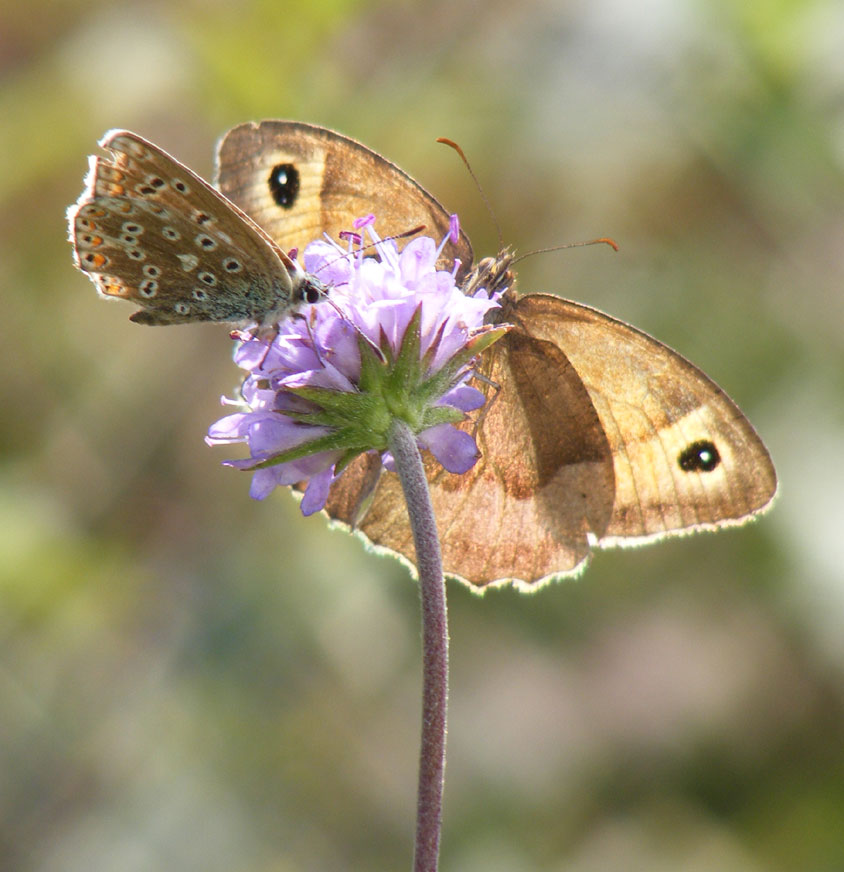 Two
Buzzards
glided from east to west over Mill Hill and rose on the thermals and circled
over the hill for five minutes (about 2:15
pm) before becoming smaller and smaller as
they rose higher and higher and then they flew off. Two immigrant Clouded
Yellow Butterflies flew rapidly from one
end of the lower slopes of Mill Hill to the other and back again. The count
of Adonis Blues
on the 1.2 acre transect of the
lower slopes of Mill Hill was 63 (44 males
and 19 females*)
with as many Meadow Browns
on
the lower slopes plus another 20 on the middle slopes, a handful of female
Common
Blues, one male Chalkhill
Blue, frequent Small
Heath Butterflies, and a few Large
Whites. At least one each of the pyralid
moths
Pyrausta nigrata and Pyrausta
despicata were recorded on the lower
slopes and at least one Treble-bar Moth
south of the Reservoir on the top of the hill. A few Swallows
and House Martins
swooped over Erringham Hill.
Two
Buzzards
glided from east to west over Mill Hill and rose on the thermals and circled
over the hill for five minutes (about 2:15
pm) before becoming smaller and smaller as
they rose higher and higher and then they flew off. Two immigrant Clouded
Yellow Butterflies flew rapidly from one
end of the lower slopes of Mill Hill to the other and back again. The count
of Adonis Blues
on the 1.2 acre transect of the
lower slopes of Mill Hill was 63 (44 males
and 19 females*)
with as many Meadow Browns
on
the lower slopes plus another 20 on the middle slopes, a handful of female
Common
Blues, one male Chalkhill
Blue, frequent Small
Heath Butterflies, and a few Large
Whites. At least one each of the pyralid
moths
Pyrausta nigrata and Pyrausta
despicata were recorded on the lower
slopes and at least one Treble-bar Moth
south of the Reservoir on the top of the hill. A few Swallows
and House Martins
swooped over Erringham Hill.
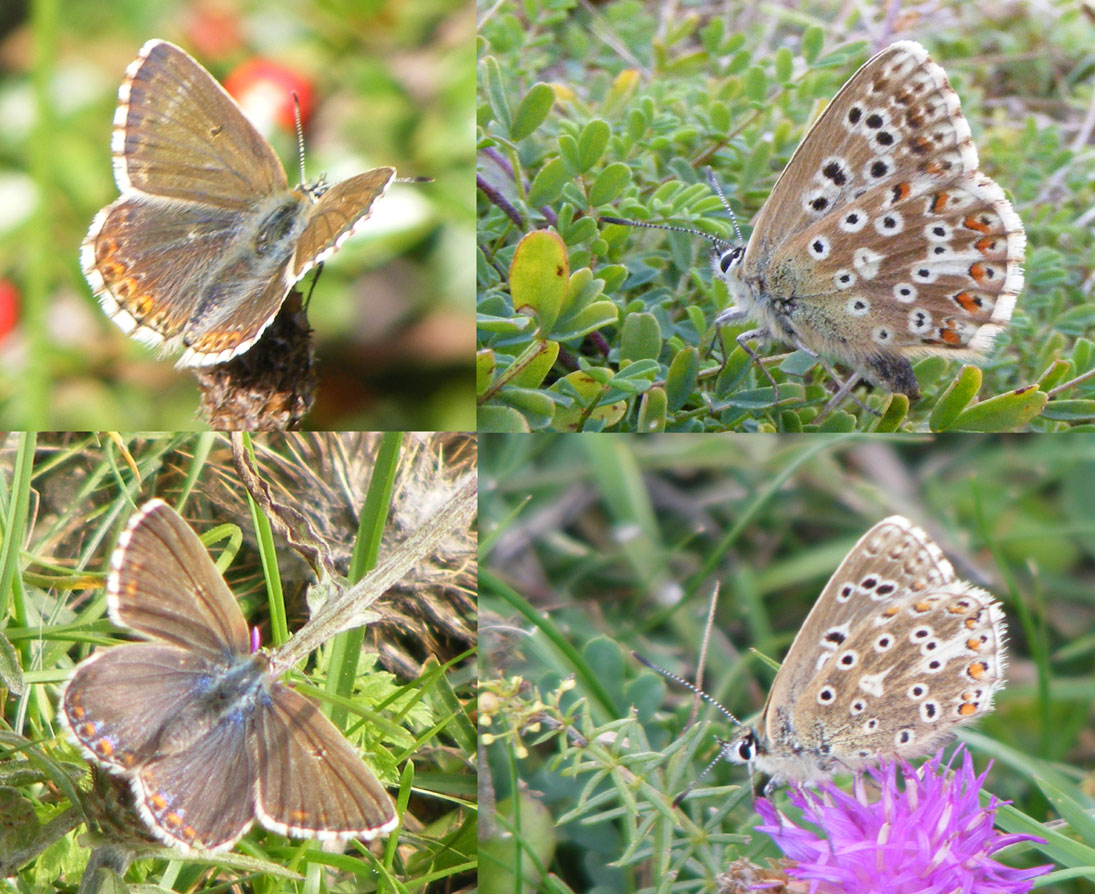 |
*
Some of the brown females could have been
Chalkhill
Blues.
These photographs show how tricky it is to identify the female blues in the field. The top two are Chalkhill Blues and the bottom two Adonis Blues. |
Autumn
Gentian was seen in flower
on the lower slopes with at least two second flowering of Sweet
Violets. Some of the Carline
Thistle had silver leaves near their roots
but green half way up. One Musk Thistle
was seen in flower on the lower slopes where the scrub had been removed
and the ground extensively disturbed. It was visited by some tiny
bees.
Full
Butterfly Report
Adur
Violets
Mill Hill was alive with butterfly activity. There are still some good Adonis Blues but I concentrated on two male Clouded Yellows that were patrolling the slopes. They met and fought many times, twirling up over the hill. Close ups required a lot of running around the hill in pursuit and hoping the landing lasted more than a few seconds. They seemed to nectar on most of the flowering plants on the hill. A Hedge Rustic Moth, Tholera cespitis, was spotted in the undergrowth (photograph below).
Adur Moths8
September 2010
At
the northern end of the lower slopes of Mill Hill, I surprised a fat Adder,
Vipera
beris beris, which quickly slithered
off into the undergrowth. Later, it returned to the same spot and was photographed
coiled up under the sun that shined intermittently through the clouds.
This
is the first report of an Adder
on Mill Hill on these Nature Notes pages. Previously
they had only be reported from Lancing
Ring.
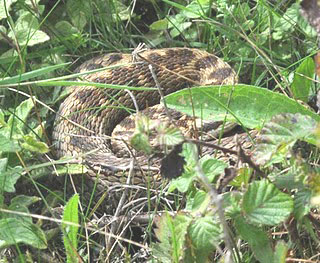 |
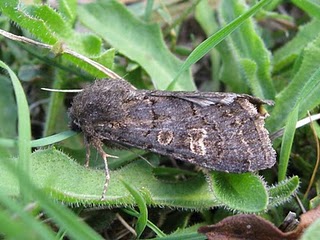 |
|
|
|
I spotted a distinctive flash of orangey-yellow and I watched a Clouded Yellow Butterfly patrolling his territory. I was never able to get near enough to spot exactly where he landed, but I had a great view of him flying methodically around his territory looking for a female. A wasp's nest was deduced from wasps leaving a hole on the steeper slopes.
4
September 2010
 Over
the Old Erringham pasture I had a very clear view of the underside of a
Buzzard
gliding down from over Erringham Hill, the first time I had such a good
view of this raptor ever. An mid-afternoon visit to Mill Hill is rarely
as productive for butterflies
as the usual late morning trip. Adonis
Blues
were the most frequently seen species with 64 (40 males 23 females) seen
on the 1.2 acre transect in
25 minutes. There
were frequent 35+ Meadow Browns
and
20+ Small Heath Butterflies and
one male Chalkhill Blue on
the lower slopes. I returned by the quickest ridge route through the Hawthorn
tunnel where the only other butterflies on the ridge edge just north of
the Reservoir were a further 17 (11 males and 6 females) Adonis
Blues.
Devil's
Bit Scabious was now searched out and
spotted for the first time this year in an overgrown part of the lower
slopes of Mill Hill. Nectar plants were few but included small Hardheads.
The photographs also revealed Adonis Blues
visiting Autumn Gentian, Creeping Thistle
and the few remaining Greater Knapweeds.
Red
Bartsia was common above the ridge but
this was not seen to be used by butterflies.
Musk
Thistle, on the ridge, had gone to seed.
I omitted to visit the middle slopes and top meadows.
Over
the Old Erringham pasture I had a very clear view of the underside of a
Buzzard
gliding down from over Erringham Hill, the first time I had such a good
view of this raptor ever. An mid-afternoon visit to Mill Hill is rarely
as productive for butterflies
as the usual late morning trip. Adonis
Blues
were the most frequently seen species with 64 (40 males 23 females) seen
on the 1.2 acre transect in
25 minutes. There
were frequent 35+ Meadow Browns
and
20+ Small Heath Butterflies and
one male Chalkhill Blue on
the lower slopes. I returned by the quickest ridge route through the Hawthorn
tunnel where the only other butterflies on the ridge edge just north of
the Reservoir were a further 17 (11 males and 6 females) Adonis
Blues.
Devil's
Bit Scabious was now searched out and
spotted for the first time this year in an overgrown part of the lower
slopes of Mill Hill. Nectar plants were few but included small Hardheads.
The photographs also revealed Adonis Blues
visiting Autumn Gentian, Creeping Thistle
and the few remaining Greater Knapweeds.
Red
Bartsia was common above the ridge but
this was not seen to be used by butterflies.
Musk
Thistle, on the ridge, had gone to seed.
I omitted to visit the middle slopes and top meadows.
Adur
Butterfly & Moth List 2010
2 September
2010
Whilst
driving up to Mill Hill I noticed a lot of Holly
Blues in the hedgerows. One pair was courting
intensely and then they vanished. I stopped the car blocking the road and
climbed up the car door to get a better view and then spotted a mating
pair. Later on in the afternoon had a look around Mill Hill to look for
a female Adonis Blue
and there were plenty flying around. I was watching an attractive male
Adonis
chasing females at a distant who suddenly seemed to stop in mid air, curious
I ran up the hill to find he had flown straight into a Common
Orb Web Spider's, Araneus diadematus,
web, shortly after he was wrapped up in silk.
30
August 2010
I
saw a female Brown
Hairstreak on an Eryngium
in my garden (close to Mill Hill).
29
August 2010
Swallows
and House Martins
swooped over Mill Hill prior to migration south. A female Kestrel
glided over the lower slopes as I walked over the plateau at the top of
Mill Hill.
 |
9300.jpg) |
|
|
|
Butterflies
were still in flight and the count of Adonis
Blues
on the 1.2 acre transect
on the lower slopes of Mill Hill was 122.
22 were seen almost immediately at the southern end. The count was 108
males and at least 14 females with at least four mating pairs. There more
on the other four acres of the lower slopes a few on the middle slopes
and occasional males on the top meadows. Other species seen during the
morning were frequent 30+ Meadow
Browns,
20+ Common Blues
and 15+ Small Heath Butterflies
plus one confirmed Brown Argus
on Mill Hill, four Chalkhill Blues on
the lower slopes, occasional Holly Blues
and Speckled Woods
in the scrub, and frequent Large Whites
everywhere. Adonis Blues
were noted visiting Carline Thistle, Ragwort
and Clematis.
Meadow
Browns were seen on Ragwort
and Wild Basil.
There was a possible Brimstone
but the white looking butterfly flew over the hedge at the bottom (west
side) and it was too far away to be sure. The large hoverfly
Volucella zonaria visited some Brambles
on the verges of the steps leading to the lower slopes at the southern
end of Mill Hill. The hay meadow below (west of) Mill Hill was still uncut.
Adur
Butterfly & Moth List 2010
24
August 2010
Buffeted
about in a Force 6
Strong Breeze gusting to Gale Force 8, the
conditions were far from ideal for butterflies
after the recent rain.
 |
 |
|
|
|
A gust
nearly blew me off my feet on Mill Hill where
a few Small Heath Butterflies and
Common
Blue Butterflies showed and one Hornet
Robber Fly. On the lower slopes male Adonis
Blues were immediately noted and Meadow
Browns
shortly afterwards. The final counts of male Adonis
Blues in the 1.2
acre transect was 68 males and 7 females (two
positively identified as Adonis).
They were attracted to Carline Thistle
which seemed more fewer in number than in previous years. On one single
Carline
Thistle head, three male Adonis
Blues and a female landed. Generally, the
Adonis
Blues tended to be separate from just six
male Chalkhill Blues.
In contrast Meadow Browns
were more than I had seen this year with an estimated 50 on the lower slopes
and at least 25 more in the scrub and middle slopes where a further five
male Adonis Blues
were noted. There seemed to be slightly more (3-2 ratio) Meadow
Brown
males than females and many were courting. There were at least a dozen
Small
Heaths on the lower slopes and more on the
middle slopes. There was at least one
Small
White noted, at least two Holly
Blues amongst the northern hedge and two
worn Gatekeepers.
A Southern Hawker (dragonfly),
flew over the middle slopes. The top meadows were now virtually denuded
of flowers and butterflies and I omitted
visiting to them in the chill breeze. Neither Devil's
Bit Scabious on the lower slopes or Autumn
Gentian on the top plateau were noted.
Full
Butterfly Report
15
August 2010
The
1.2
acre transect on the lower slopes of Mill
Hill was timed at 30 minutes because I stopped to take photographs and
on a few occasions the blues were too numerous to count exactly but the
total was a minimum of 39 male Chalkhill
Blues and 73 Adonis
Blues,
including at least five females, and an estimated 30 Common
Blues,
including
occasional females. A pair of Adonis
Blues
were mating. Over half of the butterflies
were resting and many of the Adonis Blues
were spotted resting in depressions amongst the herbs. A dozen Adonis
Blues visited some dung in the frame of a
close-up photograph. Outside the frame there were one or two Chalkhill
Blues. After counting I stopped to rest and
many more of all species appeared. The blue
butterflies were all over the steeper slopes
and the total numbers were at least three times the numbers counted and
probably many more than that. At least a dozen of the Chalkhill
Blues were in fine condition and only a handful
showed signs of wear.
 |
 |
 |
|
|
Carline Thistle |
|
|
|
Meadow
Browns and Gatekeepers
were
still frequently seen and there were two
Small Heaths on the lower slopes (and
half a dozen more on the upper plateau), with six
Wall
Browns on the lower slopes (and at least
five more on the middle slopes and two on the Pixie
Path). Common
Blues
were seen all over Mill Hill, with 30+ in the middle slopes (Triangle
area) but the top meadows were not very well populated with just 20,
but there were another 50 seen including 20 seen south of the Reservoir,
many resting in the long grasses which probably had hidden many more. Other
butterflies present were frequent Large
Whites, a few Speckled
Woods in the Mill Hill scrub, a Brown
Argus
definitely identified, although female Common
Blues were most likely. There was a possible
Brown
Hairstreak south of the upper car park which
flew rapidly into the scrub.
A
Hornet
Robber Fly settled and a Southern
Hawker (dragonfly),
flew over the overgrown meadow (now mostly Brambles) south of the Top Copse.
Robin's
Pin Cushion was noted on the lower slopes.
In
the meadows most of the Greater Knapweed
had lost their flowers and the plants were now covered with the flat discs.
Ploughman's
Spikenard was common on the lower slopes
on the disturbed land where the conservation workers had cleared the scrub.
However, the Privet
and other scrub was badly encroaching and the area where Devil's
Bit Scabious is usually found was almost completely
overgrown.
Full
Butterfly Report
9
August 2010
Sometimes
a cloudy overcast day is good for photographing butterflies
as they may remain still for just that fraction longer. On the lower slopes
of Mill Hill, Carline Thistle
now provided a nectar source for some of the 68 male Chalkhill
Blues recorded in the 1.2 acre transect
in 25 minutes. This total included some (20%) fresh good condition specimens
that would have emerged recently. There was almost as many male Adonis
Blues with 53 recorded and some (20%)
of these were in a worn condition. One female brown butterfly only of either
Chalkhill
or
Adonis was
positively seen. Both of these blue species
were frequently seen on
three acres of the steeper slopes and the actual number on the hill were
at least double the count. Common Blues
were slightly less, estimated at 30+. At one time the butterflies were
all intermingling with each other it was almost impossible to count them.
On the lower slopes, both Small Heath Butterflies
and Meadow Browns were
frequently fluttering around with occasional
Gatekeepers and Large
Whites. A Wall
Brown (one of two) visited Stemless
Thistle and Hawkbit
on the lower slopes. A Yellowhammer
chattered
loudly and flew over the lower slopes into the Hawthorn scrub. A new plant
was seen on Mill Hill on the steeper section of the lower slopes and in
the Marjoram
area of the middle slopes. This was Ploughman's
Spikenard and I had identified it before.
Sloe
berries were spotted amongst the scrub.
 |
 |
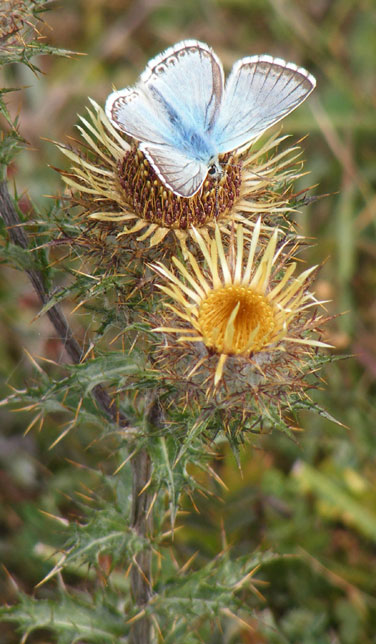 |
 |
|
|
|
Carline Thistle |
|
In
the scrub, middle slopes and top meadow and plateau there were a further
ten Wall Browns
making a total of twelve. In the Marjoram
meadow area north of the Triangle area of
the middle slopes Common Blues
and Brown
Argus
were
frequently seen with a few small
pyralid
moths
Pyrausta purpuralis. There was a Holly
Blue in the scrub with at least three
Speckled
Woods.
The
half acre top meadow (north of the upper car park) on Mill Hill was still
alive with butterflies, but the half acre now hosted only about a 60 Common
Blues
on
both genders, but the total actually seen on Mill Hill exceeded 200. The
meadow areas near the upper car park also hosted a Southern
Hawker (dragonfly),
a large Hornet Robber Fly,
the first Small White Butterfly
of a few on the day, and a fresh Peacock
Butterfly.
Butterfly
& Moth List 2010
 |
The Yellow Rattle area of the Middle Slopes, immediately west of the upper car park, overlooked the River Adur at high tide. |
2
August 2010
With
the sun finding a gap in the clouds there were reasonably good conditions
for butterfly watching on the parched downs.
I was not in the mood for recording the numbers, but I noted that the Chalkhill
Blues on
the lower slopes of Mill Hill were slightly less than the previous day,
but only 64 were recorded in the 20 minutes walk on the 1.2 acre transect,
which included just the five definite females
including a mating pair that flew away. They may have been more widely
dispersed over the slopes. Small Heath
Butterflies were frequently seen with
the inevitable and frequent
Common Blues,
Gatekeepers
and Meadow Browns.
There were almost as many Common Blues
as Chalkhill Blues
on the lower slopes and at least two male Adonis
Blues were spotted with a possible
female.
The
Scrub area hosted a few Speckled Woods
and
a Marjoram
patch north of the Triangle area of the middle
slopes has proved rich in butterflies including hosting three of the fourteen
Wall
Browns seen on Mill Hill as well as occasional
Brown
Argus.
It was in this area I spotted my first Small
Copper on Mill Hill this year. It was
in a worn condition. Silver Y Moths
and Six-spotted Burnet Moths were
noted.
 |
 |
 |
|
|
|
|
What
a difference a day makes: the half acre top meadow (north of the upper
car park) on Mill Hill was still alive with butterflies, but the half acre
now hosted only about a 120 Common Blues,
but they may have dispersed as surrounding meadow areas were now more densely
populated so the total on the hill does not seem to have diminished in
numbers. Brown
Argus
Butterflies
were
plentiful as I ever seen them with at least 30 positively recorded and
many more did a successful imitation of a Common
Blue female.
Brown
Argus and female Common Blues ID Images
Butterfly
& Moth List 2010
1
August 2010
Even
when the sun found a gap in the clouds not many more than a hundred Chalkhill
Blues were
disturbed on the one acre transect on the lower slopes of Mill
Hill. As there was not even spread over
the steeper slopes this extrapolated to mere 350 on Mill Hill. This is
a very low figure for the peak period. There
were a few worn females.
The lower slopes hosted about a dozen male Adonis
Blues and there was even one seen on a
upper meadow. The first butterfly to appear on the lower slopes was a Small
Heath one of a few seen with frequent
Common Blues,
Gatekeepers
and Meadow Browns.
A Bordered Straw Moth, Heliothis
peltigera, settled near the Privet.
A Wall Brown flew
up the hill, but the middle slopes were more a province of this butterfly
with six more, another one flying rapidly to and throe' over the top meadow
(north of the upper car park) and two more in the meadow south of the Copse.
 |
 |
7432.jpg) |
Common Blue Butterflies
The
top meadow (north of the upper car park) on Mill Hill, was alive with butterflies
and most of these were Common Blues which
were everywhere. I estimated the numbers in excess of 700 just in the half
acre meadow (north of the upper car park). This
extrapolated to over 1500 on Mill Hill, possibly many more.
The same meadow hosted a Wall Brown
and Adonis Blue
already mentioned, frequent Brown
Argus
as
well as the similar female Common Blues,
occasional
Large Whites and Meadow
Browns.
 |
 |
 |
 |
|
|
Moth Caterpillar |
|
|
The
adjoining meadow immediately south of the Copse
is now overgrown with Brambles
and it was in this area that I saw a dozen or more Brown
Argus
with
some of them about to mate, all mixed with female Common
Blues and a few Gatekeepers.
A
Comma
Butterfly landed on a Bramble leaf. A
Peacock
Butterfly flew over a path. A Holly
Blue and Speckled
Wood were seen amongst the scrub. A stripy
Cinnabar
Moth crawled over a Ragwort
plant.
Full
Butterfly Report
 30
July 2010
30
July 2010
On
a cloudy day the first two brown female Chalkhill
Blue
Butterflies were spotted crawling amongst
the leaves of Horseshoe Vetch, Hippocrepis
comosa, on the south-eastern bank of the Mill
Hill Cutting where 25 males
flew in this small garden-sized patch, and latterly another two, including
a mating pair, were spotted on the transect 1.2 acre of the lower slopes
of Mill Hill, where an estimated hundred
males
were disturbed on a very dull middle of the day. The sun did not appear
on Mill Hill, where there were frequent male Common
Blues, frequent Gatekeepers
and Meadow
Browns
of
both genders, and a few Small Heaths and
Large
Whites. I only visited the lower slopes,
but Common Blues
were frequently seen on the southern part of Mill Hill.
Butterfly
& Moth Report
28
July 2010
With
three days before the peak emergence of Chalkhill
Blue Butterflies on Mill
Hill would be expected, the numbers are extremely poor with just 49
males recorded on the lower slopes transect on a cloudy day. There was
another Chalkhill Blue
over the Old Erringham pasture as seen from the gate and at least two more
males over the meadows on the top of Mill Hill. The first second brood
male Adonis Blue
was noted on the lower slopes, with five Wall
Browns (two on the edge of the lower slopes)
seen on the hill with very frequent
Gatekeepers and Meadow
Browns
and
four Small Heaths.
Common
Blue male butterflies were almost as frequent
as the Chalkhill Blues
on the lower slopes, and on the middle and upper slopes their numbers exceeded
200. Females of these three blue species were not noted, but the cloudy
and breezy conditions were well below optimum. There were a few Brown
Argus
on
the middle slopes and meadows of Mill Hill, frequent Large
Whites, plus a few Small
Whites, at least one Comma,
two Speckled Woods,
three Peacock Butterflies,
and a few Silver Y Moths.
A female Brimstone Butterfly
sparred with smaller and equally white Large
White and visited Stemless
Thistle for nectar.
Butterfly
& Moth Report
Chalkhill
Blues on Mill Hill
23
July 2010
A
Common
Lizard, Zootoca
vivipara, skittered
into the undergrowth next to the northern steps amongst the Hawthorn scrub
down to the lower slopes of Mill Hill. This was my first of the year.
The
meadow north of the upper car park exploded in blue
butterflies with ten male Common
Blues in a square metre on about fifteen
occasions and more blues and other butterflies
over the rest of the meadows on Mill Hill giving total numbers seen in
excess of 400. All were males and no females were spotted. Many more were
hidden on a cool day. As well as Gatekeepers,
Meadow
Browns
were
widespread and frequent
on the slopes in open areas and a few in the scrub.
Large
Whites were seen occasionally. A Red
Admiral was seen on the top part of the
hill and a single Chalkhill Blue
visited a died out cow pat. In the bramble-covered meadow to the south
of the Top Copse a positive Green-veined
White was identified, a Peacock
Butterfly landed on a Greater
Knapweed, a Marbled
White fluttered over the flowers and Silver
Y Moths fluttered in the undergrowth.
A Yellowhammer
flew like a whirring torpedo from the shelter of a bush above the ridge
over the lower slopes to the scrub dividing the Nature Reserve from the
uncut hay meadow below and to the west.
 |
 |
 |
 |
|
|
|
|
|
The
Chalkhill
Blues on the lower slopes were not flying
unless disturbed so only fifteen were seen on the transect. It looks a
bit like a pyralid
but the Small Purple-barred Moth Phytometra
viridaria is a noctuid small moth was seen on the lower slopes.
There was also an immigrant called the
Rush
Veneer, Nomophila
noctuella, a small brown moth that
was probably overlooked before. Marbled Whites
were still flying with two seen over the lower slopes at one seen in the
meadows on the top. A Peacock Butterfly
was seen over the Old Erringham pasture. A single Speckled
Wood flew in the scrub.
The
most interesting area was the west side of the Triangle on the middle slopes,
an area rich in flowering Marjoram.
Immediately a few Brown Argus
were seen flying around with frequent male Common
Blues, frequent Six-spotted
Burnet Moths, a large orange butterfly
that I caught sight off flying like a fritillary
in
a typically loping style, but it was probably a
Comma
Butterfly (later thought to be another Wall Brown, but a Dark Green Fritillary
is very much a possible), a Wall
Brown and a Brimstone
Butterfly.
A
large area of Yellow Rattle was
noted for the first time in the meadow west of the upper car park.
Small
Scabious was growing on the lower slopes
but in the upper meadows it was Field Scabious.
Other
Butterfly Reports
Adur
Moths
20
July 2010
On
the lower slopes of Mill Hill, the count
of male Chalkhill Blues
were still a mere seventeen. Although it is
over a week to the peak period, it still looks like it will be another
poor year for this downland butterfly.
The
top meadow (north of upper car park) on Mill Hill was noted for an explosion
of male Common Blues
with twenty of these bright blue butterflies all appearing at once.
 |
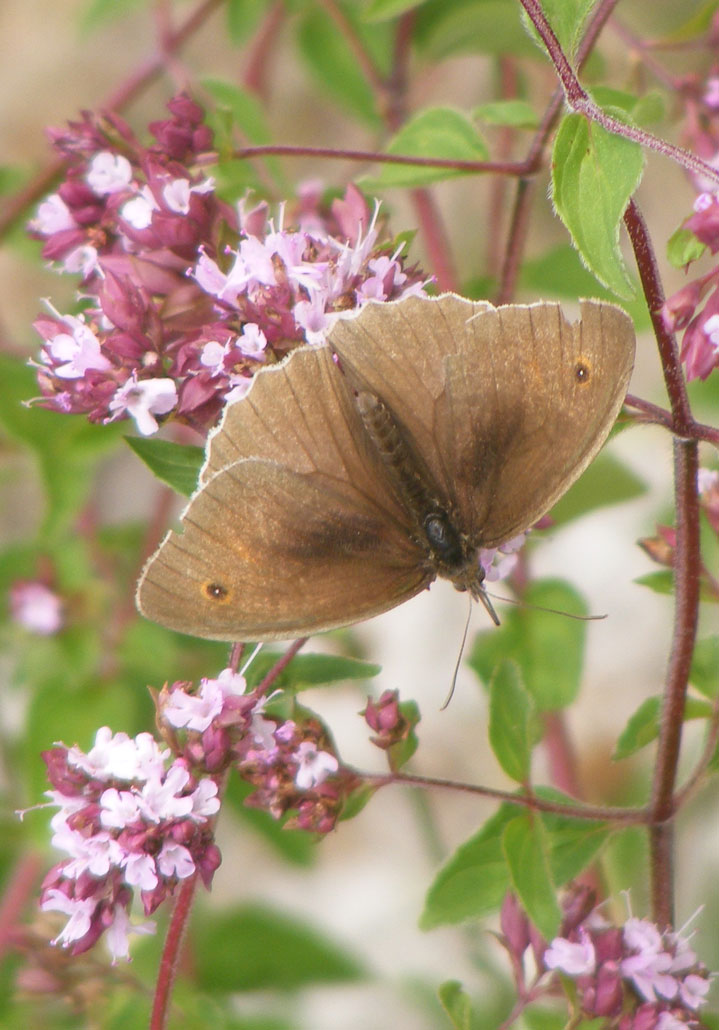 |
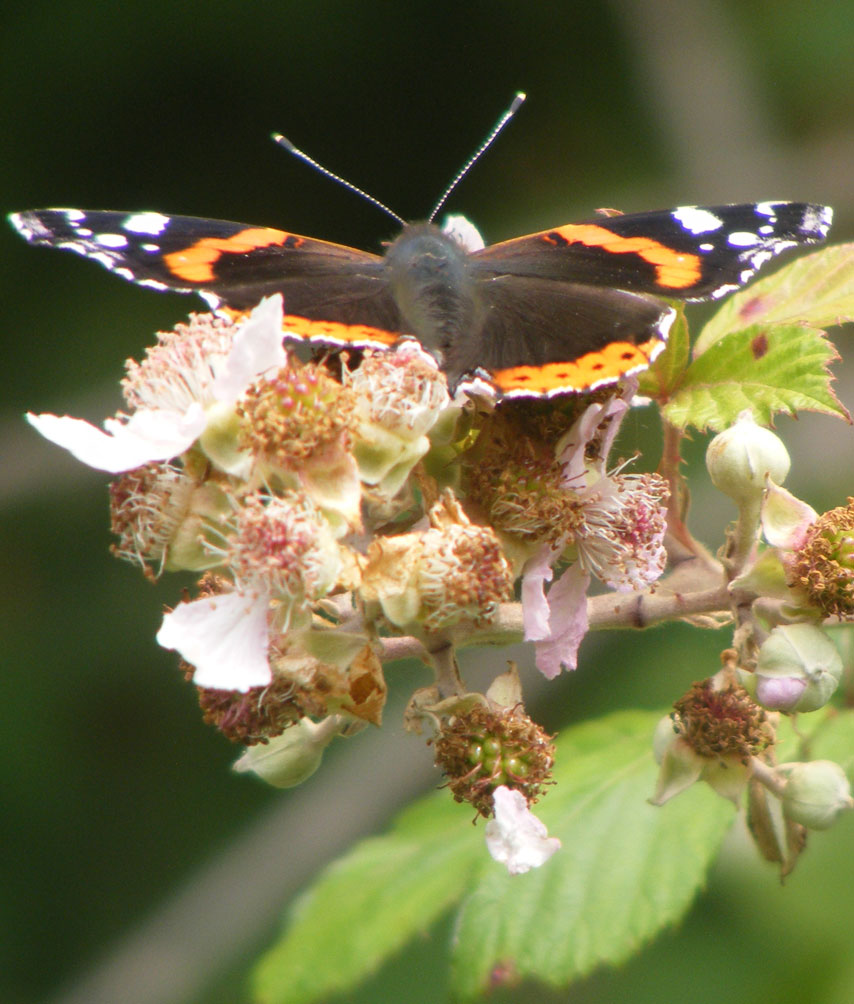 |
 |
|
|
|
|
|
Meadow
Browns
and Gatekeepers were
seen almost everywhere on the hill with a few Red
Admirals, Peacock
Butterflies, Large
Whites, Marbled
Whites, Silver
Y Moths, frequent Six-spotted
Burnet Moths and one each of Speckled
Wood, Small
Heath, Brown Argus
and a Small Skipper.
A
brown larva
of the Drilus beetle
was spotted crawling across a steep path amongst the Hawthorn scrub.
Full
Mill Hill Butterfly Count
Adur
Beetles
14
July 2010
An
overcast day greeted with spots of rain as I met Eunice
Kenward and two students surveying two areas
of cleared land on the lower slopes of Mill Hill for the ecological
succession of plants. The conditions were not inimical to butterflies
which were not the purpose of the visit. I did disturb eight male Chalkhill
Blues and six Marbled
Whites on half of the transect, with a
Meadow
Brown
and
two Gatekeepers.
Six-spotted
Burnet Moths were frequently seen visiting
Stemless
Thistles, which were frequently seen in
flower, as well as visiting other purple flowers including Hardheads,
Greater
Knapweed and Musk
Thistle. The small pyralid
moth
Pyrausta nigrata was frequently seen
and very noticeable. Robin's Pin Cushion
was recorded for the first time this year.
 |
 |
 |
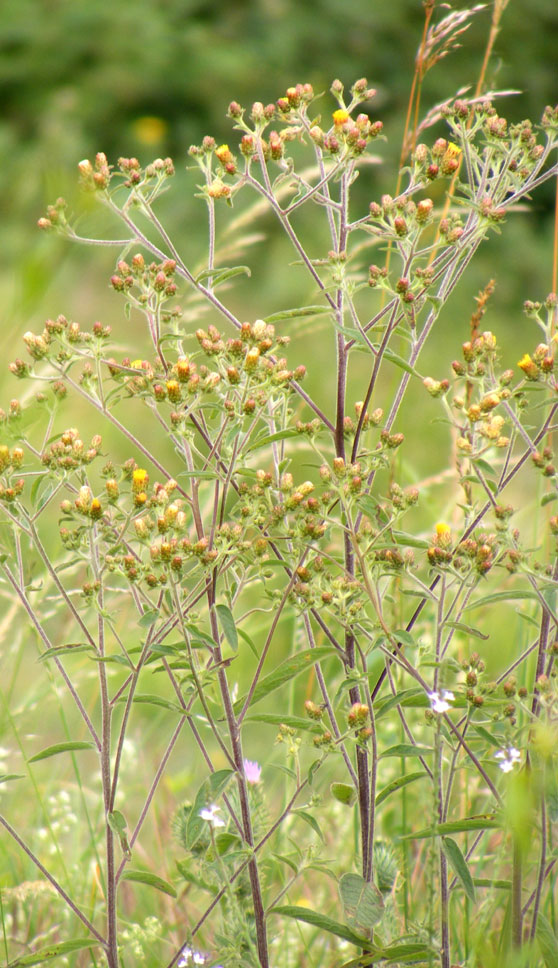 |
|
Meadow Grasshopper |
|
|
|
The
botanical survey enabled me to include a new plant on the list, Ploughman's
Spikenard which was frequent on the cleared
slopes above the path. Although tall and easily seen, its rather ordinariness
possibly accounted for me not recording it before. Musk
Thistle and Great
Mullein as well as the invasive Dogwood,
Bramble and
Privet
colonised the new cleared land. Smaller plants in the undergrowth included
about three grasses, plus Agrimony,
Vervain,
Cleavers,
Lady's Bedstraw,
Great
Mullein,
Wild
Mignonette, Hound's-tongue
(dead
plants and leaves) and Prickly
Sow Thistle.
Adur
Wild Flowers
11
July 2010
Round-headed
Rampion was seen in flower
for the first time this year with at least a dozen plants seen on Mill
Hill, but there would be many more on the short sward top slopes and the
first one was seen on the lower slopes.
Extra
Wild Flower Images and Reports
On
the transect 1.2 acres of the lower slopes of Mill Hill, I recorded three
Chalkhill
Blues, frequent Gatekeepers
(36+)
occasional Meadow
Browns
(6+),
frequent
6-spotted
Burnet Moths (18+), frequent pyralid
moths
Pyrausta nigrata, four Marbled
Whites, one Large
White, three Small
Skippers, two Small
Heaths and one Peacock
Butterfly.
uwing5473.jpg) |
 |
 |
 |
|
|
|
|
|
North
of the top car park the first second brood Common
Blue Butterflies appeared with four fresh
males seen amongst in the long grass and herb meadow. On the rest of Mill
Hill I recorded about eleven Meadow
Browns,
at least seven Gatekeepers,
five Marbled Whites,
at least two Small Skippers
and at least five Silver Y Moths.
Amongst the scrub I also spotted one Comma,
one Red Admiral,
one Ringlet
and two Speckled Woods.
Full
Butterfly & Moth Report
5 July
2010
The
first Chalkhill Blue Butterfly
of the year was recorded at 11.06 am
on the lower slopes of Mill Hill. Five Ringlet
Butterflies were recorded in the scrub
bordering the meadows on the top of Mill Hill for the first time. Other
butterflies
gracing Mill Hill in an hour were Small
Heath 9, Meadow
Browns
30, Marbled Whites 36, Comma
3, Peacock 1,
Large Whites 3+, Gatekeeper 9, Large
Skipper 1 and Speckled
Wood 3. There were noticeable females
of Meadow
Browns
and
Marbled
Whites.
Adur
Butterflies: First Dates
Full
Butterfly & Moth Report
 |
 |
 |
 |
|
|
|
|
Greater Knapweed |
Flowers
noted on Mill Hill for the first time this year were Wild
Basil on the lower slopes and in clearing
amongst the scrub, Small Scabious
in the Old Erringham pasture, and Stemless
Thistle with one on the lower slopes and
a handful on the exposed slopes at the top, with Musk
Thistle in flower on the ridge by the
Reservoir. The lower slopes were very prickly when I attempted to find
somewhere to sit down, so there would hundreds of Stemless
Thistle to flower later. Squinancywort
was very common on both the lower slopes and middle slopes. Dropwort
could still be seen in flower on the exposed upper slopes. On the upper
slopes the green shoots of Autumn Gentian had appeared. The distinctive
fly Panorpa
(image)
could be seen in the sunnier areas of the scrub.
Adur
Thistles
 |
 |
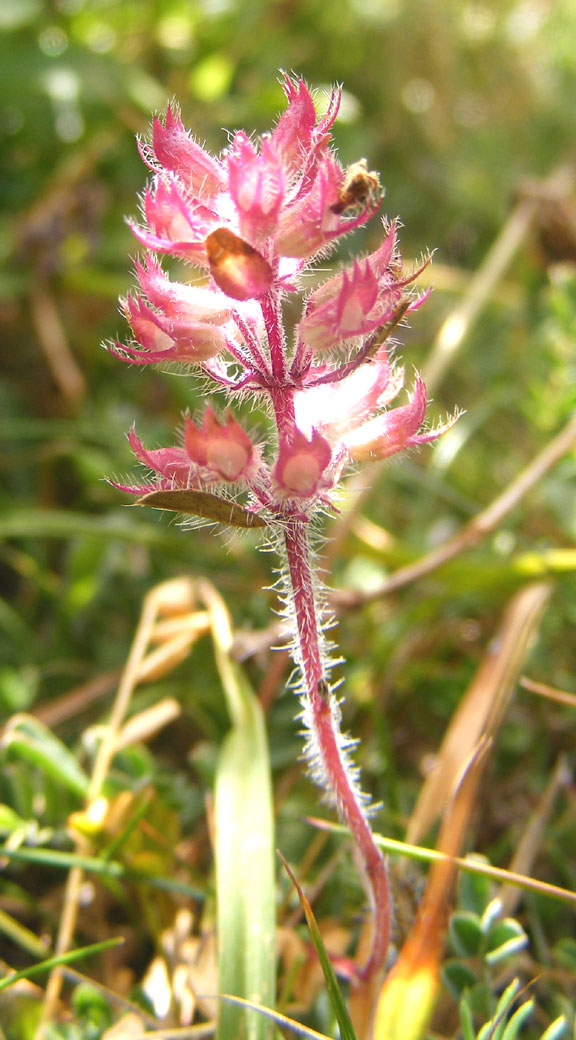 |
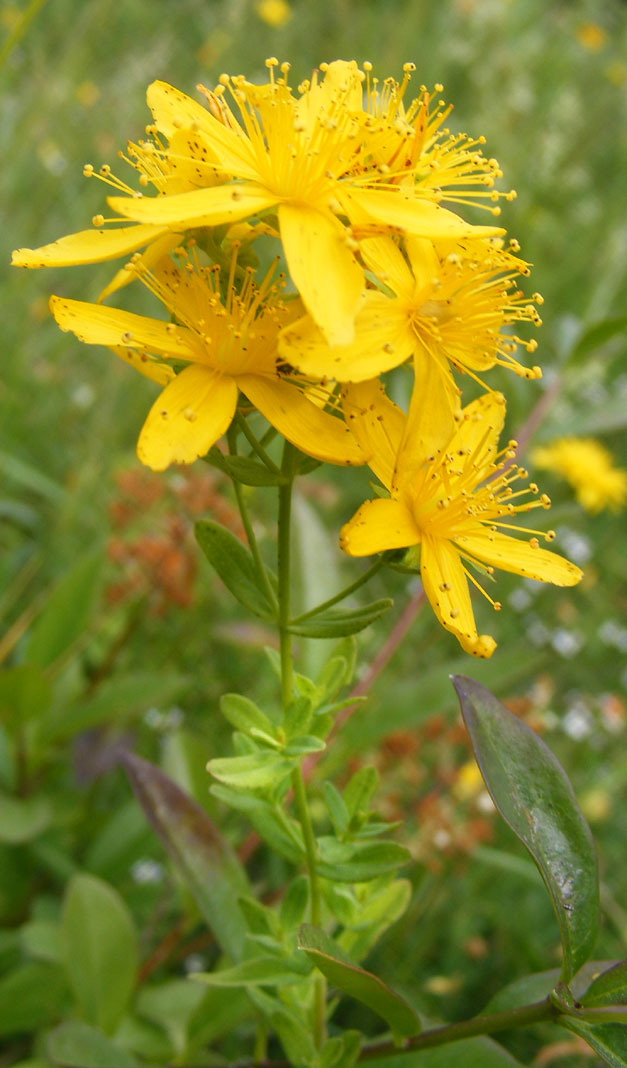 |
|
|
|
|
St. John's Wort |
Agrimony
on
Mill Hill is usually a single spike with hardly any leaves at all, especially
on the infertile lower slopes. The clump in the photograph above was on
the deeper soil on the ridge by the Reservoir. The diminutive Wild
Basil in the photograph above is before
the small purple flowers appear.
Mill
Hill Extra Reports and Images
27
June 2010
On
a warm humid (>22 °C)
day, butterflies and day-flying moths
recorded were 13 Small Heath Butterflies,
up to nine (5 to 9) Marbled Whites and
at least two male Common
Blues on
the lower slopes of Mill Hill. The were frequent small moths including
the pyralid
Pyrausta purpuralis. The woody scrub
and copse area added five Speckled Woods,
the middle slopes, two more Marbled Whites
and unidentified Burnet Moths. The
top meadows hosted eleven Meadow
Browns,
at least four unidentified Burnet Moths,
one Cinnabar Moth,
more than four Silver Y Moths,
a courting pair of two Large Skippers,
a Small Heath Butterfly and
at least one Burnet Companion Moth,
all amongst the dried cow pats. The
remains of a Kestrel were
seen amongst the meadow choked with Brambles
south of the top Copse. The plateau and southern
part of Mill Hill added another two Small
Heath Butterflies, two Small
Tortoiseshell Butterflies, another Meadow
Brown
and
a few Silver
Y Moths. The Bumblebee
mimic
Volucella
bombylans var. bombylans was
spotted in the Hawthorn scrub immediately to the north of the lower slopes
of Mill Hill.
 |
 |
|
 |
|||
|
|
|
|
|
Eyebrights
were in flower with at least one Centaury
on the lower slopes of Mill Hill, the invasive
Dogwood
on the middle slopes of Mill Hill, with Tall
Melilot, Field
Scabious and
Meadow Cranesbill on the upper meadows
of Mill Hill. On the lower slopes of Mill Hill, new growths of Privet
were again threatening to take over. In the top meadows of Mill Hill (the
ones not overgrown by Brambles)
the Greater Knapweed had
commenced flowering in their hundreds, but their were thousands of buds
yet to open.
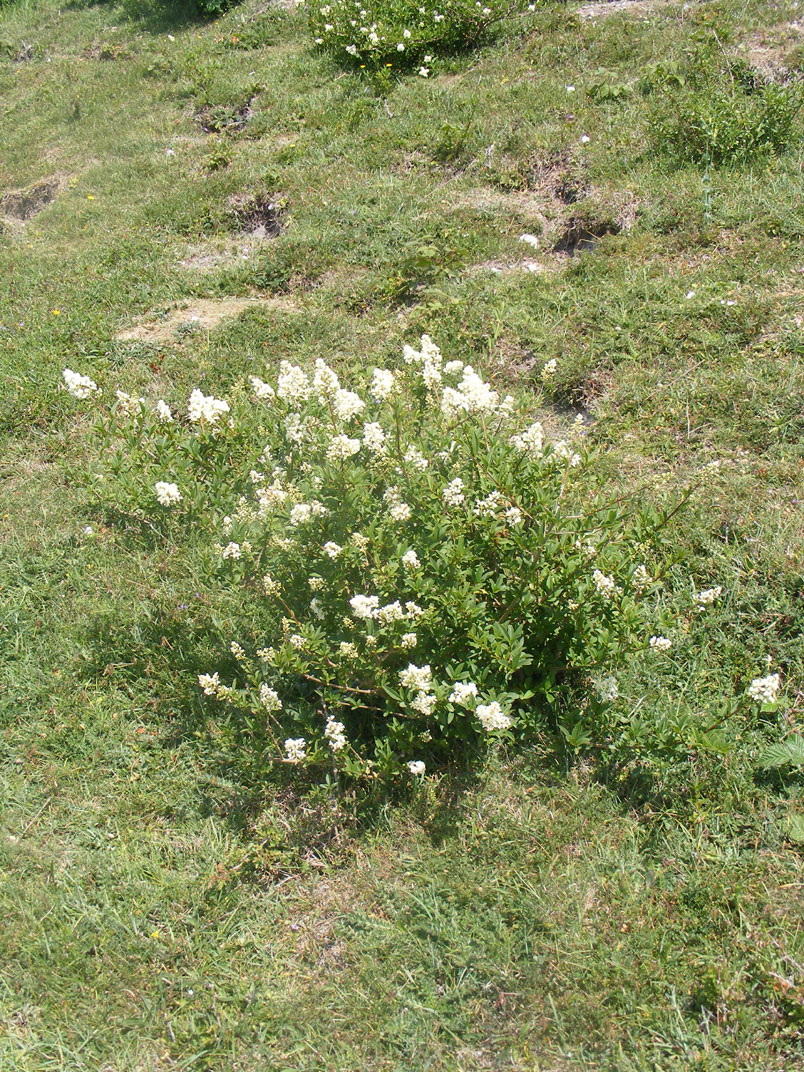 |
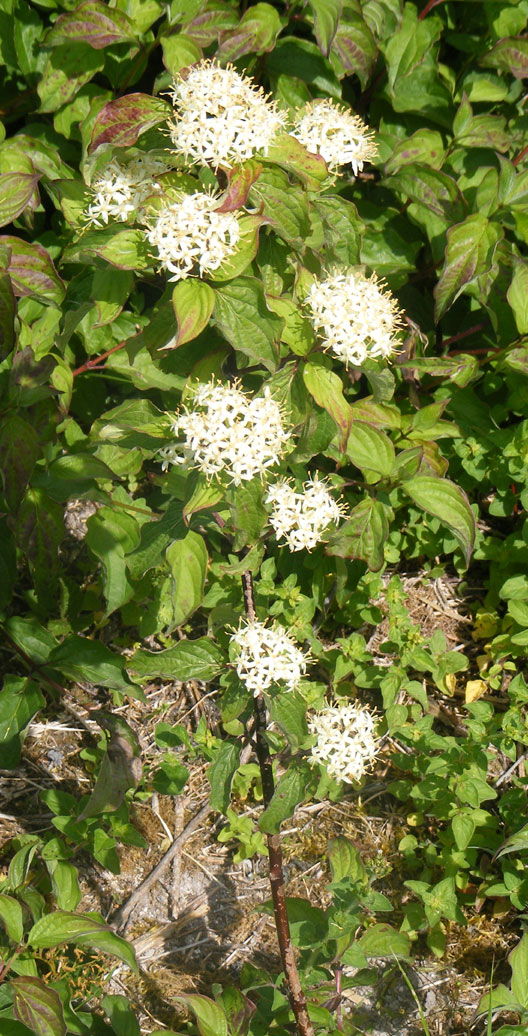 |
 |
 |
|
|
|
Meadow |
|
Melilot
notes
The
Tall
Melilot has deeper yellow flowers; in
the Ribbed Melilot
they are more lemon yellow. The leaves stalked on the Tall
Melilot: on the Ribbed
Melilot they are generally un-stalked.
18
June 2010
Grasshoppers
were strident on Mill Hill with plenty of Dropwort
on the lower slopes and the ridge with tall grasses including Cocksfoot.
New flowering growths of Privet
were
appearing in worrying amounts on the lower slopes. The lower slopes of
Mill
Hill produced the first flowering
Thyme,
Yellow
Wort,
Squinancywort,
and there were four flowers of Greater
Knapweed on the southern part of Mill
Hill (the only part visited). Horseshoe
Vetch,
Hippocrepis comosa,
had almost disappeared.
 |
|
 |
 |
|||
|
|
|
Greater Knapweed |
|
Almost
immediately I parked by bicycle on the southern part of Mill
Hill, two Small Heath Butterflies
and my first Meadow
Brown of the year put in an appearance.
At least a dozen worn Common Blues
were
seen on the lower slopes included two females, plus at least five Small
Heaths, three Meadow
Browns, frequent brown pyralid
moths including Pyrausta despicata,
plus a few Pyrausta purpuralis.
A few Blue Lacewing were
noted. I returned by the shortest ridge route where a Speckled
Wood fluttered in the Hawthorn tunnel.
On the return passage trip, the southern part of Mill Hill produced one
male Common Blue,
another three Meadow
Browns and a Large
Skipper visiting one of the first
Greater
Knapweed flowers amongst the Cocksfoot very
near the road south of the Reservoir.
Full
Butterfly Report
Adur
Butterflies: First Dates
Wild
Flower List
9 June
2010
A
check on Mill Hill in the sunshine (>17.6
°C) showed the Horseshoe
Vetch,
Hippocrepis comosa,
receding rapidly on the lower slopes and the still frequent (35+) Adonis
Blues
of
both genders were outnumbered by the
very frequent
(50+) Common
Blues
of
both sexes, with courting couples and the visible males outnumbering the
females by nearly two to one in both species. The Small
Heath Butterfly was also frequently (30+)
seen aligning itself at angle when it settled for fleeting moments. A yellow
Brimstone
Butterfly skirted the wayward hedgerow
at the bottom (western edge) of Mill Hill Nature
Reserve. This hedge hid a noisy Pheasant.
Just one bright Small Tortoiseshell Butterfly
was noticeable on a day when the butterflies
were very restless. Small moths (but not the usual
pyralids)
were frequently seen in the amongst the herbs and there were at least three
Burnet
Companions Moths and more than one Treble-bar
Moth.
Dropwort
was in flower and some plants were budding.
 |
|
 |
|||
|
|
|
|
Bird's
Foot Trefoil was flourishing in large
patches on both the middle slopes and the plateau at the top.
The
scrub added a Common Carpet Moth
and I noted a pair of Blue Tits
chattering on a Hawthorn branch. The copse
at the top hosted a Speckled Wood.
In the meadow to the north of the upper car park, Common
Blues flitted amongst the taller herbs and
it was here that I spotted my first Large
Skipper of the year. There were a handful
of Silver Y Moths.
The overgrown meadow to the west hosted three Speckled
Woods, a Brimstone
Butterfly, and a bright Wall
Brown. The plateau added a male Adonis
Blue and the southern meadows a few Common
Blues and a Small
Heath on a quick passage.
Full
Butterfly Report
Adur
Moths
Adur
Skippers
Adur
Butterflies: First Dates
6 June
2010
I
joined an excellent tour of Mill Hill on Saturday morning led by Brianne
Reeve of the Shoreham District Ornithological
Society. Common Blues
were everywhere and mating, also some Adonis
Blues. A pair of Dingy
Skippers were conducting an aerial courting
display a few inches above the grass for over five minutes. A Wall,
Brimstone
and Speckled Wood
were seen.
| 5
June 2010
Fly, Platystoma seminationis on Alexanders, Mill Hill. |
 |
31 May 2010 On a cloudy but dry afternoon, I visited Mill Hill to see Wall Brown, Adonis Blues, Grizzled Skippers and Dingy Skippers. Photograph Left: Female Adonis Blue by Colin Knight |
30
May 2010
 The
first grasshoppers of the year were
heard and then seen on the lower slopes of Mill Hill. With
the breeze (Force 3
gusting to Force 5) it felt too cool for butterflies,
although the temperature was recorded at 18.8
°C at 1:00
pm when I visited Mill
Hill. A few
Holly
Blues were seen in the Hawthorn scrub
on Mill Hill. The first butterfly to appear on the southern part of Mill
Hill was a bright red Peacock,
the only one of the day. On the transect 1.2
acres of the lower slopes the count in a timed
11 minutes was 122 male Adonis Blues
and nine females,
including a mating pair. This count extrapolates
to about 350 Adonis Blues
on Mill Hill. Later, I saw at least three
more mating pairs. Identification needed at practiced eye as there were
frequent male Common Blues
on the lower slopes estimated at about twenty. The identification was tricky
on several occasions as some of the Adonis
were past their best and the black markings on the wing fringe of the wings
was almost absent. The Horseshoe Vetch,
Hippocrepis
comosa, was also past its best and
thousands of the flowers had already ceased. Other butterflies recorded
on the lower slopes were occasional Small
Heaths and one each of a Red
Admiral,
Brimstone,
Green-veined
White and Dingy
Skipper.
The
first grasshoppers of the year were
heard and then seen on the lower slopes of Mill Hill. With
the breeze (Force 3
gusting to Force 5) it felt too cool for butterflies,
although the temperature was recorded at 18.8
°C at 1:00
pm when I visited Mill
Hill. A few
Holly
Blues were seen in the Hawthorn scrub
on Mill Hill. The first butterfly to appear on the southern part of Mill
Hill was a bright red Peacock,
the only one of the day. On the transect 1.2
acres of the lower slopes the count in a timed
11 minutes was 122 male Adonis Blues
and nine females,
including a mating pair. This count extrapolates
to about 350 Adonis Blues
on Mill Hill. Later, I saw at least three
more mating pairs. Identification needed at practiced eye as there were
frequent male Common Blues
on the lower slopes estimated at about twenty. The identification was tricky
on several occasions as some of the Adonis
were past their best and the black markings on the wing fringe of the wings
was almost absent. The Horseshoe Vetch,
Hippocrepis
comosa, was also past its best and
thousands of the flowers had already ceased. Other butterflies recorded
on the lower slopes were occasional Small
Heaths and one each of a Red
Admiral,
Brimstone,
Green-veined
White and Dingy
Skipper.
 |
 |
 |
|
|
|
|
My
first Silver Y Moth
of the year was seen by the Reservoir
and another one the lower slopes where I saw at least one Burnet
Companion Moth for the first time this
year. The small pyralid
moth
Pyrausta nigrata was seen, but I did
not spot any of the other pyralids. In the scrub there were one or two
more male Adonis Blues,
and my first Carpet Moth
of the year. I have identified this carpet moth as the Purple
Bar, Cosmorhoe
ocellata. This
is my first record of this common species.
It
was getting quite breezy by the time I trekked over the middle slopes where
the Horseshoe Vetch
and Bird's Foot Trefoil
was blooming in the Triangle area as a Red
Admiral flew overhead. The first butterfly
in the top meadow (north of the upper car park) was a Wall
Brown followed by about twenty male Common
Blues still in flight although the sky was
overcast. A few more Adonis Blues
were seen above the ridge.
Full
Butterfly & Moth Report
26
May 2010
I
spent a very enjoyable day out with Simon
Barnes, David Bebber, BC Chief Executive Dr Martin Warren and Michael Blencowe.
Simon is the award winning sportswriter and wildlife columnist for The
Times, as well as being an accomplished author. David is one of the UK's
top media photographers, and I was left in awe at his proficiency with
the camera - I couldn't even work out what he was up to most of the time,
as he wielded his Canon with such consummate ease!
Unsurprisingly, we were out doing an article on butterflies and conservation.
After lunch we travelled to Mill Hill at Shoreham, where I was confident
we would find some nice butterflies shivering in the grass. Sure enough,
Adonis
Blues and Common Blues, plus the
odd Small Heath,
Dingy
Skipper and Grizzled
Skipper were there to smile for the cameras.
Simon's article will hopefully appear in The Sunday Times Magazine in a
few weeks from now. It was a real pleasure to spend a day with such 'greats'
- and by that I mean all of them.
23
May 2010
The
sun was out with a clear blue sky and the air temperature in the shade
reached 18.3 °C
at 1:00 pm when
I trekked through the scrub after visiting the lower slopes of Mill Hill.
With
the sun coming out, so were the butterflies.
As I parked my bicycle at the top of the steps at the southern end leading
down to the lower slopes of Mill Hill, a couple of my first Small
Heaths of the year danced over the short
grass. Then a larger brownish-orange
butterfly strongly over the Hawthorn before my eyes were adjusted.
 |
 |
 |
|
|
|
|
From the southern steps the Horseshoe Vetch, Hippocrepis comosa, was visible but a few days away from its peak. Venturing down to the lower slopes, there were sufficient butterflies around that I immediately knew there would be a problem counting them unless I kept notes. Most of these were male Adonis Blues and I kept my count to the 1.2 transect area completed in 25 minutes. The transect tally recorded was exactly 100 males plus two females, including a mating pair. Later (after I had stopped counting) four mating pairs were seen. Extrapolation of the count over the five acres of the lower slopes making allowances for lower numbers at the southern end, leads to me to make a conservative estimate of 300 Adonis Blues on Mill Hill, a larger number than recorded before.
Other butterflies recorded were 15 Dingy Skippers, 16 Common Blues, five more Small Heaths (all at the southern end), four Grizzled Skippers (Including in a courting pair mostly in the central overgrown area), a male Orange Tip, at least two Brimstone Butterflies, one unidentified white butterfly and a Treble-bar Moth. The small pyralid moth Pyrausta nigrata was frequently seen, but I did not spot any of the other pyralids. A Green Hairstreak was seen just outside the transect area with scores more Adonis Blues and at least half a dozen Dingy Skippers as I sat down north of the path.
In the scrub to the north-west a white butterfly was almost certainly a Green-veined White, plus a Holly Blue, with another white butterfly and five more male Adonis Blues amongst the Bulbous Buttercups in the the Old Erringham pasture. On the Triangle area of the middle slopes, the Horseshoe Vetch had now appeared, but the only butterfly was a Wall Brown in the north-east corner at the entrance to the Top Copse where this species is regularly seen. A Red Admiral flew over shortly afterwards. The Copse hosted a Speckled Wood. Two female Pheasants whirred from the top meadow (north of the upper car park) for a short flight and I disturbed them again. I noted another Adonis Blue at the same time as the commotion. Flying next to the scrub were a couple of Brimstones, one white female and a yellow male. On the gentle slope of the top part of Mill Hill, a Dingy Skipper visited a Horseshoe Vetch flower and there were a further half a dozen Adonis Blues, including another mating pair. A Large White Butterfly fluttered near the Reservoir.
18
May 2010
I
went to Mill Hill in the late afternoon for a quick walk around and saw
5 Green Hairstreaks,
my first ever in Sussex, also Wall Brown
(1) Small Copper
(1) Brimstone
(3) Dingy Skipper,
some egg laying (>20), Small White
(1) , Burnet Companion Moth
3, Adonis Blues
> 15 one mating pair with deformed wings of the female. Perhaps this was
due to very early mating on emergence the male was quite literally carrying
her around. Mill Hill was alive with butterflies.
16
May 2010
Eleven
people attended the Butterfly
Conservation Society walk on Mill
Hill at Shoreham. Despite overcast skies and
a strong, cool wind, the butterflies performed well! Many stayed on after
the official end to the walk, enjoying spells of quite warm, late afternoon
sunshine - and some fabulous butterflies. Approximately 25 pristine Adonis
Blues provided the 'star turn', including
a mating pair. Several other chocolate-brown females were seen. Other species
included
Dingy Skipper
(15), Grizzled Skipper
(3), Common Blue
(2), Green Hairstreak
(1), Small Copper
(1), Brown Argus
(1), Small Heath
(2) and Holly Blue
(1). Thanks to all that showed a lot of faith in turning up on such a dreary
Sunday afternoon, making it a very enjoyable event.
14
May 2010
It
was after midday
when a brown butterfly landed on the steps leading down to the lower slopes
of Mill Hill from the southern end. It was not so quickly recognised as
my first Wall Brown Butterfly
of the year followed by another one almost immediately. I had walked almost
halfway along the transect on the lower slopes before I spotted my first
butterfly which settled on a Horseshoe Vetch,
Hippocrepis
comosa, flower and immediately recognised
as a chocolate-brown female Adonis Blue
Butterfly.
A Grizzled Skipper
chased a male Adonis Blue,
one of nine males
seen in the half an hour I spent on the Shoreham Bank. There was enough
Horseshoe
Vetch for hundreds of butterflies but it did
not stop my first Brown
Argus
(one of two) of the year landing on the same flower as another male Adonis.
Two of the blue male butterflies looked smaller with a subtle different
shade of blue. When one of these settled, they were identified as my first
male Common Blue Butterflies
of the year. Four Dingy Skippers
flitted from flower to flower and leaves on the northern part of the lower
slopes. The small pyralid
moth
Pyrausta nigrata was
frequently
seen, but I did not make a note of any other species.
 |
 |
 |
|
|
|
|
Amongst the Hawthorn scrub in the north-west area of Mill Hill Nature Reserve I encountered a settled Green-veined White and a Speckled Wood, with two more Speckled Woods in the copse at the top of the hill. The meadows are the top of Mill Hill looked rather forlorn and covered in dried cow pats with just a pair of courting Dingy Skippers dancing together amongst the Brambles that were straggling a route through the meadow.
St.
Mark's Flies, Biblio, were common
and both Nephrotoma Crane Flies
and Nomada
bees were frequently seen, probably Nomada
flava. On the middle slopes in the
Triangle
area I noted a dozen or so flowers
of Field Mouse-ear, Cerastium
arvense.
On the lower slopes I think I also
spotted an isolated Hairy Violet,
the first of the year, but the identification is always tricky with these
as they look like Sweet Violets.
Hawthorn
was yet to flower, although a few buds showed. In the Triangle area there
was no sign of flowering Horseshoe Vetch,
but Bird's Foot Trefoil
had appeared. Cowslips
flowered in attractive clumps on the middle slopes (north of the Triangle)
and on the plateau at the top.
Full
Butterfly Report
Adur
Butterflies: First Dates
Adur
Violets
12
May 2010
After
nearly week of overcast weather (and
overnight air temperatures falling to 0.9
°C) a brief opening in the clouds encouraged
me to make a trek to the lower slopes of Mill Hill to check out the Horseshoe
Vetch, Hippocrepis comosa,
and the butterflies (only small numbers were
expected) (9.2 °C)
just before midday.
 |
 |
 |
The
expanse of Horseshoe Vetch
was only just beginning (the first flower
was seen nine days late this year) and visited by 13 Dingy
Skippers and my first four male Adonis
Blues of the year. There was also one
yellow Brimstone Butterfly,
an unidentified white
butterfly and a good condition Peacock
Butterfly on the bank. I returned by the
ridge route as I felt the first spots of rain.
Adur
Butterfly List 2010
6 May
2010
Then
off across the bridge to Mill
Hill Nature Reserve
on the lower slope I spent two hours, 2.30
to 4.30 pm. I saw my first Adonis
Blue of the year, then I found three Green
Hairstreaks, three Small
Coppers, one Grizzled
Skipper, two Orange
Tips, one Speckled
Wood, two Small
Heaths, lots of Dingy
Skippers, male and female Brimstones,
and Small Whites.
28
April 2010
A
quick walk with the dog over Mill Hill,
TQ
212072 and I spotted Peacocks,
Speckled
Woods, and my first Small
Heath of the year.
27
April 2010
As
the sun had come out, albeit briefly and weakly, I thought I would pay
a quick visit to Mill Hill to examine the
numbers of skippers
and micro-moths on the lower slopes. On the 1.2
acre transect the 15 minute count was five
Grizzled
Skippers (including a courting pair) and
six Dingy Skippers.
Only one Peacock
was seen with three Brimstone Butterflies
and
an unidentified white
butterfly.
Pyralid
moths were common, and could
be seen at all times on the lower slopes. They were the three usual species:
Pyrausta
nigrata
(100+), a few Pyrausta
purpuralis and a few Pyrausta
despicata. Contrary to making my usual
circular route through the scrub, I walked back along the lower slopes
above the pathway. Almost immediately I spotted another Dingy
Skipper and then four Peacocks
and an Orange-tip
fluttered past. I sat down to rest and spotted another three Brimstones
skirting the wayward hedgerow below (west edge of Mill
Hill Nature Reserve), before another Grizzled
Skipper visited the Dog
Violets beside me. A Dotted
Bee-fly,
Bombylius
discolor, was noted hovering about
at the bottom of the lower slopes. A few Nomada
fucata cuckoo bees
were spotted skulking about.
 |
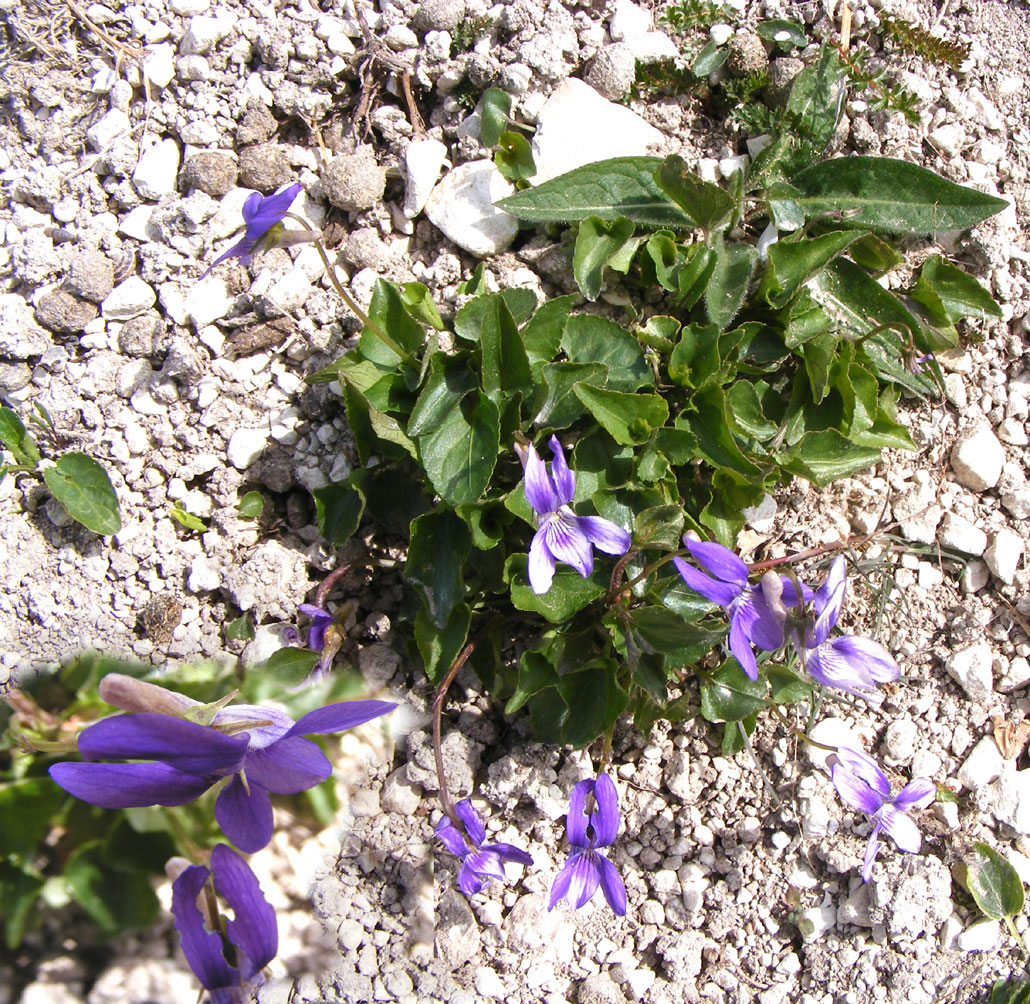 |
 |
|
|
|
|
Patches
of unidentified
Violets, Viola sp.,
were noted for the first time this year growing in cleared patches of scrub.
I was surprised that I had not seen these clumps before on Mill Hill. (These
could be the Early Dog Violet, Viola
reichenbachiana.) The latest thinking
is that these are hybrids, intermediate between Early Dog Violets and Common
Dog Violets. The sepals were spade-shaped ending in a point.
Horseshoe
Vetch, Hippocrepis comosa,
and Milkwort
were now frequently seen, but, of course, nothing like their superabundance
of the former expected in a month's time. Dandelions
were common, but I also noted
and examined a Lesser Hawkbit. Both
Horseshoe Vetch and
Lesser Hawkbit hosted
the small black pollen
beetles,
Meligethes
erichsoni.
Clumps of Cowslips
were now frequently seen, many much smaller in stature than seen in richer
soils.
Full
Butterfly Report
Adur
Skippers
Adur
Violets
Horseshoe
Vetch starts flowering in middle to late April, peaks in mid-May, continues
in profusion for about a week and is usually all over by the first week
in June.
Flowering
Dates of Horseshoe Vetch
25
April 2010
I
had Mill Hill to myself from 1:30 to 3:00
pm, amazing on a sunny Sunday afternoon. There
was an abundance of Grizzled Skippers
and Dingy Skippers
and I witnessed fights among two and three individuals, and across species.
I estimate I saw ten of each species plus four Peacocks
and an Orange tip.
23
April 2010
I
had no plans to visit Mill Hill, but I decided to venture down to the lower
slopes, which were alive with scores of pyralid
micro-moths of the three usual species: Pyrausta
nigrata (50+), Pyrausta
purpuralis (8+) and a few Pyrausta
despicata. These were the ones actually
seen and there were many more. The usual transect route hosted a few Peacocks
and a few Brimstones but
failed to reveal any skippers,
but I decided up the steep slopes where one Grizzled
Skipper landed on a Dandelion
next to me. A Dotted Bee-fly,
Bombylius
discolor, was spotted hovering just
below the ridge. There was a lot of small flying insect activity with small
wasps
and flies
and even a smaller than usual Honey Bee.
Full
Butterfly Report
 |
 |
 |
|
|
|
|
The
first solitary flower of the Horseshoe
Vetch, Hippocrepis comosa,
appeared on the lower slopes of Mill Hill, at least nine days later than
last
year. The first solitary Milkwort
was
also spotted.
Flowering
Dates of Horseshoe Vetch
| 21
April 2010
Blackthorn could be observed in flower at a distance from the Adur Levels, with patches in the wayward hedge at the bottom (west) of Mill Hill, a small amount in the scrub in the north-west and small amounts near the ridge in the woodland on the southern banks adjoining the Waterworks Road. The photograph on the right shows an area of cleared scrub on the lower slopes. |
 |
My first ever sighting of a Dingy Skipper, well actually four, and six Grizzled Skippers at Mill Hill (Grid ref: TQ 210 072).
In
my garden at Mill Hill we saw one Small
Tortoiseshell, one male Orange
Tip (my first of the year) and one flighty
Holly
Blue. I went over the bridge in the afternoon
to the lower slopes of Mill
Hill Nature Reserve to find one male Brimstone
also one female Brimstone
there was lots of Peacocks
flying about, one Speckled Wood,
five
Grizzled Skippers
and four Dingy Skippers
that included a mating pair.
18
April 2010
In
the blue hazy sky a Skylark
sang continuously over Erringham Hill (immediately north of Mill Hill)
whilst in the copse on Mill Hill a Great
Tit and a Chaffinch
flitted
between the trees. The Stinging Nettles which have appeared in profusion
since the introduction of
Cattle
during the winter months were the residency of two Small
Tortoiseshell Butterflies. The transect
area of just over an acre on the lower slopes produced just the six Grizzled
Skippers, one Dingy
Skipper, occasional Peacock
Butterflies, a few Brimstone
Butterflies and frequent pyralid
micro-moths of the three usual species: Pyrausta
purpuralis (40+),
Pyrausta
despicata (a
few) and Pyrausta nigrata (10+).
There may have been considerably larger numbers of these small moths. Pyrausta
purpuralis was in unprecedented profusion.
 |
 |
 |
The
north-west Hawthorn scrub area of Mill Hill Nature
Reserve hosted at least three Speckled
Woods and some more Brimstones
and Peacocks,
and the copse at the top was the abode of a Red
Admiral. The Triangle
area of the middle slopes had been cleared of the new Dogwood
that threatened to overwhelm the clearing, and without looking for any
butterflies
another Grizzled Skipper appeared
and another one was seen just north of the Reservoir on the ridge of the
lower slopes.
There
was a third party descriptive report by a couple of birdwatchers of what
could only be a mating pair of Small Copper
Butterflies, the first record this year.
A Dotted Bee-fly, Bombylius
discolor, was spotted hovering about
and visiting Dog Violets. .
Diminutive Cowslips
were noted in occasional
clumps. Blackthorn
was flowering in small amounts in the
scrubby hedgerow (separating Mill Hill from the hay meadow) at the bottom
(west) of the lower slopes.
Full
Butterfly Report
Adur
Butterflies: First Dates
Adur
Skippers
Dotted
Bee-flies Information
17
April 2010
Eight
butterfly
species were seen at Mill
Hill: Peacock,
Comma,
Small
Tortoiseshell, Brimstone (female), Large
White,
Speckled
Wood,
Dingy Skipper
and an amorous pair of Grizzled Skippers!
15
April 2010
At
last I managed to see my first skippers
of the year, although they would not easy to discover if it was not for
the other butterfly
spotters
on Mill Hill. This was by dint of watching
them photographing a Dingy Skipper,
my first skipper, and then I spotted a fluttering Grizzled
Skipper out of the corner of my eye before
I was shown a mating pair on Bramble and then discovered another mating
pair for myself.
 |
 |
 |
|
|
|
|
Only
the lower slopes were visited and the other butterflies
showing were a few Peacocks and
a yellow Brimstone.
I saw my first Pyrausta nigrata pyralid
micro-moths, with two settled and others flitting
about. A Bee-fly
was spotted hovering about but its identity could not be discerned. Crow
Garlic or Wild Onion, Allium
vineale,
was noted in large amounts on the road verges of the southern part of Mill
Hill. This was the first time I noted this plant on Mill Hill.
Full
Butterfly Report
Adur
Skippers
Adur
Flies 2010
14
April 2010
What
a difference a day makes, showing the fickle nature of butterfly
appearances. A half an hour spent on the lower slopes of Mill Hill failed
to locate any butterflies on a cool overcast day.
13
April 2010
Things
are hotting up nicely now and Mill Hill must have been one of the warmest
places in the country today. Sheltered from the north-east wind the butterflies
were very active. Estimates for Grizzled
Skippers range from 10 to 15 including
one mated pair and at least another courting pair. Mating lasted over an
hour during which time they were watched and photographed by five Butterfly  Conservation
Sussex members. They are certainly fascinating to watch and interesting
to see how a male will chase off other species even when sighted in the
distance but not (too) bothered by us humans creeping up slowly. Also a
Dingy
Skipper (the
first of the year in Sussex) with its wings
still drying, matching the first date from last year at the same spot to
within 10 metres, at the same time of day and by the same observer! Looks
like the cold weather didn't affect this species at least.
Peacocks
everywhere, two Small Tortoiseshells,
three Brimstones,
two Small Whites
and one Comma.
Conservation
Sussex members. They are certainly fascinating to watch and interesting
to see how a male will chase off other species even when sighted in the
distance but not (too) bothered by us humans creeping up slowly. Also a
Dingy
Skipper (the
first of the year in Sussex) with its wings
still drying, matching the first date from last year at the same spot to
within 10 metres, at the same time of day and by the same observer! Looks
like the cold weather didn't affect this species at least.
Peacocks
everywhere, two Small Tortoiseshells,
three Brimstones,
two Small Whites
and one Comma.
11
April 2010
On
the lower slopes of Mill Hill, there were half a dozen more Peacock
Butterflies but the Grizzled
Skippers were not seen, not even by the other
four butterfly
spotters.
There
was a slight chill in the breeze in the weak sunshine.
There were occasional pyralid
micro-moths
Pyrausta purpuralis. Dog Violets
were now about equal in prevalency to the Sweet
Violets.
A Grizzled Skipper was seen on the lower slopes of Mill Hill.
8 April 2010
| Mill
Hill showing the cleared patches of scrub on the lower slopes
This photograph can be compared to the one at the very top of this page taken the previous year. |
The
butterfly
spotters
were out on Mill Hill in the sunny morning to find the first few Grizzled
Skippers of the year. They found them,
but I did not, even I though stayed on the hill for the best part of an
hour. Peacock Butterflies
were frequently seen with about 16 on Mill Hill
(the actual sightings were more, but some on the lower slopes may have
been the same ones). They were very active and visited the abundant
Sweet Violets, but they were also seen on
the much lesser quantity of Dog Violets
which were only just starting. A large white male Brimstone
Butterfly was the first to be seen of
at least four definites on the lower slopes, of each gender and another
male in the Ivy amongst the Hawthorn scrub in the north-west of Mill
Hill Nature Reserve, A Red Admiral
settled briefly under the copse at the
top of the hill. On the ridge and the top of the lower slopes just north
of the Reservoir, four good condition orangey Small
Tortoiseshell Butterflies were seen divided
into two pairs, and another one was seen over the road five minutes later.
A few pyralid micro-moths
were seen on the lower slopes with Pyrausta
purpuralis definitely identified.
With a flurry of noise a male Pheasant
flew from the dense Hawthorn scrub over the lower slopes and into the meadow
below (to the west).
Full
Butterfly Report and Images
 |
 |
 |
|
|
|
|
|
Returning to Mill Hill with my father and Brian Henham, we saw three, possibly four Grizzled Skippers, seven Peacock Butterflies, four Brimstone Butterflies, two Small Tortoiseshell, one Comma, together with pyralid moths: one Pyrausta aurata, six Pyrausta purpuralis, three Pyrausta despicata and two Pyrausta nigrata.
6 April
2010
The
first Grizzled
Skipper of
the year was discovered on Mill Hill. Also
present were six Peacock,
one Brimstone
and the diminutive pyralid moths: one Pyrausta
aurata, four Pyrausta
purpuralis and three Pyrausta
despicata.
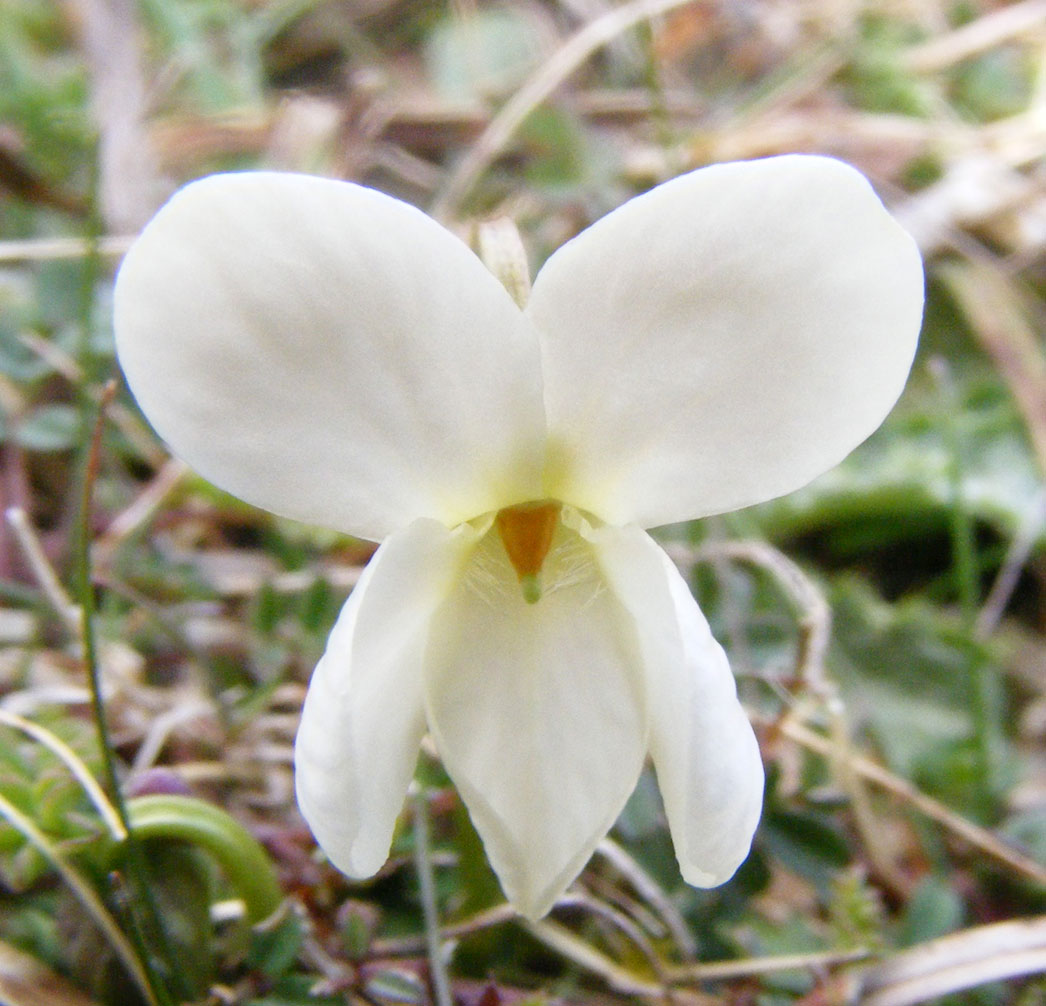 21
March 2010
21
March 2010
14
March 2010
On
the lower slopes of Mill Hill the conservation workers had removed a considerable
amount of the invasive Privet and
a large amount of encroaching Hawthorn
as well. Large areas of moss were now noticeable.
The
first signs of spring sunshine and hundreds of Sweet
Violets were sparsely scattered over the
lower slopes of Mill Hill. (However, these
violets
were surprisingly absent on the steep slope beneath the seat on the southern
section of Mill Hill, where a large clump are usually the first to appear
each year. This land was badly disturbed and there were only a few leaves
to be seen instead of hundreds all clumped together.) The dead heads of
Carline
Thistle, with silvery leaves, were frequently
seen on the lower slopes. At the bottom of the steps in the north-west
corner of Mill Hill, several clumps of Field
Speedwell were noted growing out from
the cracks.
 |
 |
 |
 |
|
the lower slopes of Mill Hill |
|
|
|
The
first bumblebee of the year, a Queen Buff-tailed
Bumblebee,
Bombus terrestris, flew
out of the vegetation in a cleared space of the Hawthorn scrub in the north-west
part of Mill Hill Nature Reserve. A male Pheasant
strutted under the copse at the top of
the hill.
Adur
Violets
Adur
Wild Flowers 2010
Multi-Map
(Bird's Eye View) of Mill Hill
9 January
2010
Further
snow fell in the morning.
 |
 |
 |
On
Mill Hill it was difficult to gauge the depth of snow because of drifting,
but it was measured at 120 mm.
With the early afternoon northerly winds at a Moderate Breeze (Force
5) small ground
blizzard conditions were created on the New Erringham pastures as the
powdery snow was blown from the north-east. The temperature remained
just below freezing for most of the day.
One
of the Cows
in the photograph was observed stripping the leaves from the Hawthorn.
Shoreham
Weather 2010: Snow
7 January 2010

Mill Hill viewed from Lancing Ring
Mill
Hill Wildlife Reports 2009 (Link)
Mill
Hill Wildlife Lower Slopes Reports 2008 (Link)
Lower
Slopes of Mill Hill 2005
| Chalkhill
Blue (3000 +)
Adonis Blue (50 -100) Dingy Skipper (75) |
Small
Heath (250)
Wall Brown (12) Meadow Brown (300) |
Marbled White (50)
Gatekeeper (200) Speckled Wood (>50) Green-veined White (2+) |
Common
Blue (>4000+)
Small Blue (5) Brimstone (8) |
Small
Skipper (>50)
Large Skipper (10+) Grizzled Skipper (20) Brown Argus (>30) Green Hairstreak ( a few) |
The other species may breed on Mill Hill, but there main breeding area will be adjoining fields or slightly further away. e.g. Small Blue (included above), Small Copper, Small Tortoiseshell, Green-veined White, Peacock, Ringlet, Small White, Large White, Comma, Holly Blue, Orange Tip. (=10)
The following are immigrants &/or hibernators: Red Admiral, Painted Lady, Clouded Yellow.
The following have not been positively identified (because of ID difficulties): Essex Skipper. This species is now included for a local field on the Adur Levels within 500 metres of Mill Hill.
(=30)
The
following was confirmed only in 2009:
Green
Hairstreak.
(=31)
The next one is no longer
found on Mill Hill but were there in the recent (reduced drastically to
almost extinct by 1948 last record in 1968) past: Dark
Green Fritillary (Records of this butterfly
in 1857, 1938, and 1945 when it was common.)
The next one is no longer
found on Mill Hill but were there in the distant (1947) past: Grayling.
The next one has been recorded
near Mill Hill in the middle distance past: White-letter
Hairstreak
(=34)
The
Silver-spotted
Skipper does not appear to ever have occurred
on Mill Hill
The
Silver-studded
Blue has never been recorded from Mill Hill
The Short-tailed Blue was recorded as a single immigrant in 1956.
17
August 2009
A
possible (unconfirmed) Brown Hairstreak Butterfly
was
spotted.
Aerial
Map
Lower
Adur Levels (MultiMap) including Lancing Clump and Mill Hill
Horseshoe
Vetch,
Hippocrepis comosa
First
Draft of the Article for the Shoreham Society Newsletter
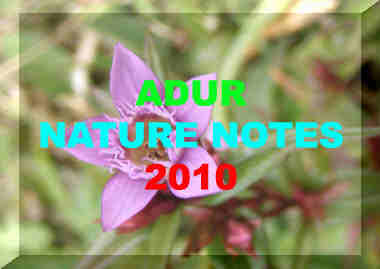
|
|
|
|
|
|
|
|
|
|
|
|
|
|
|